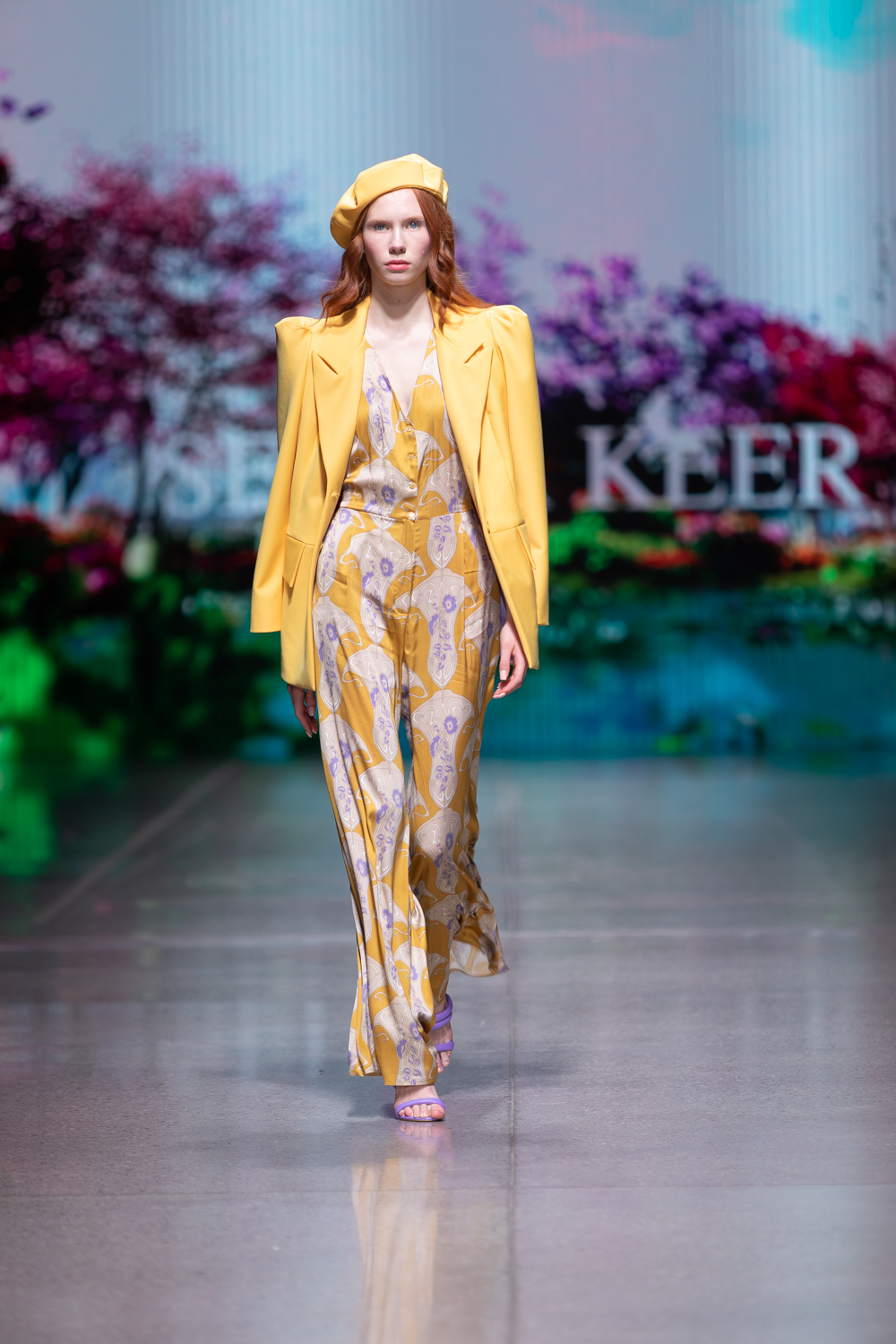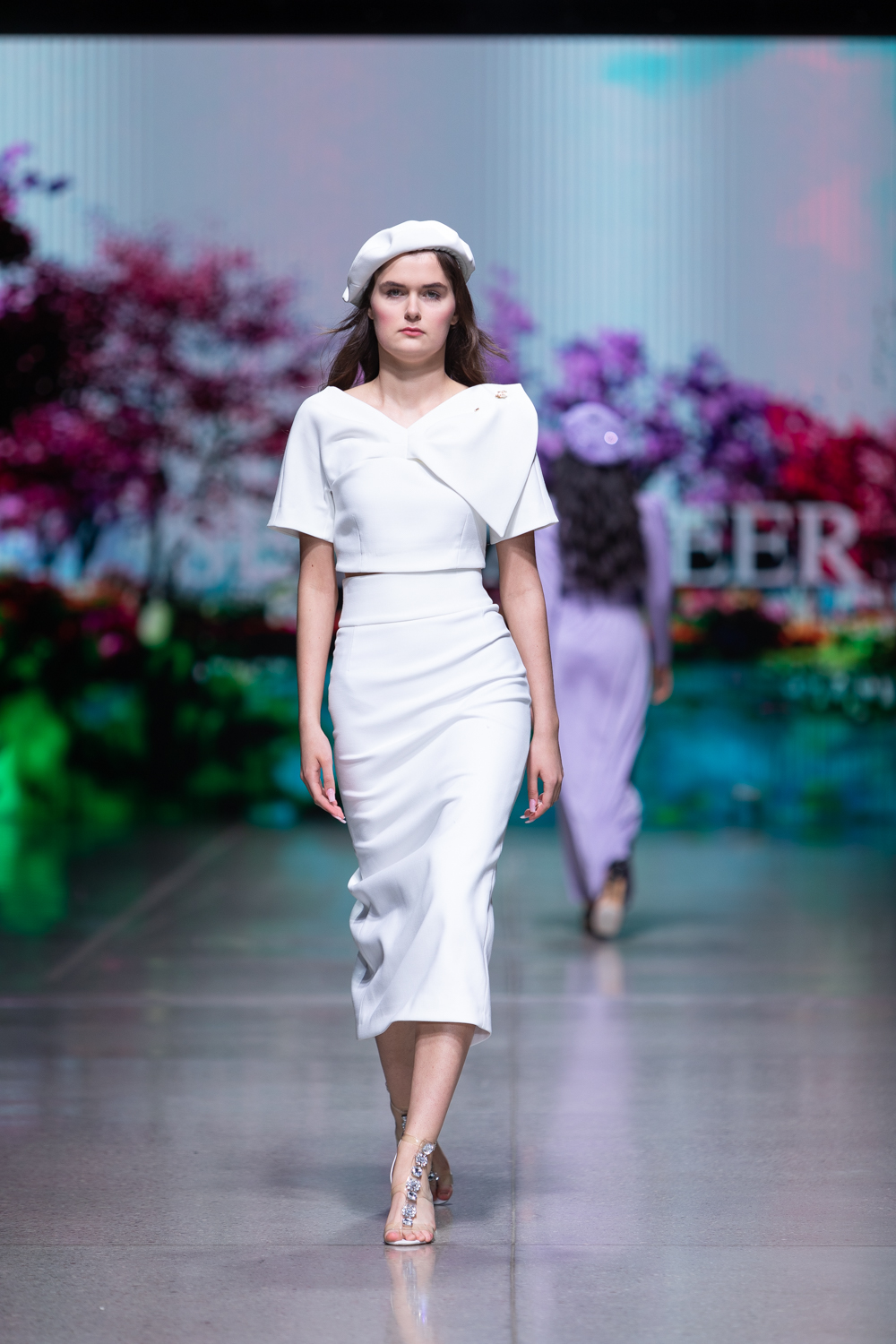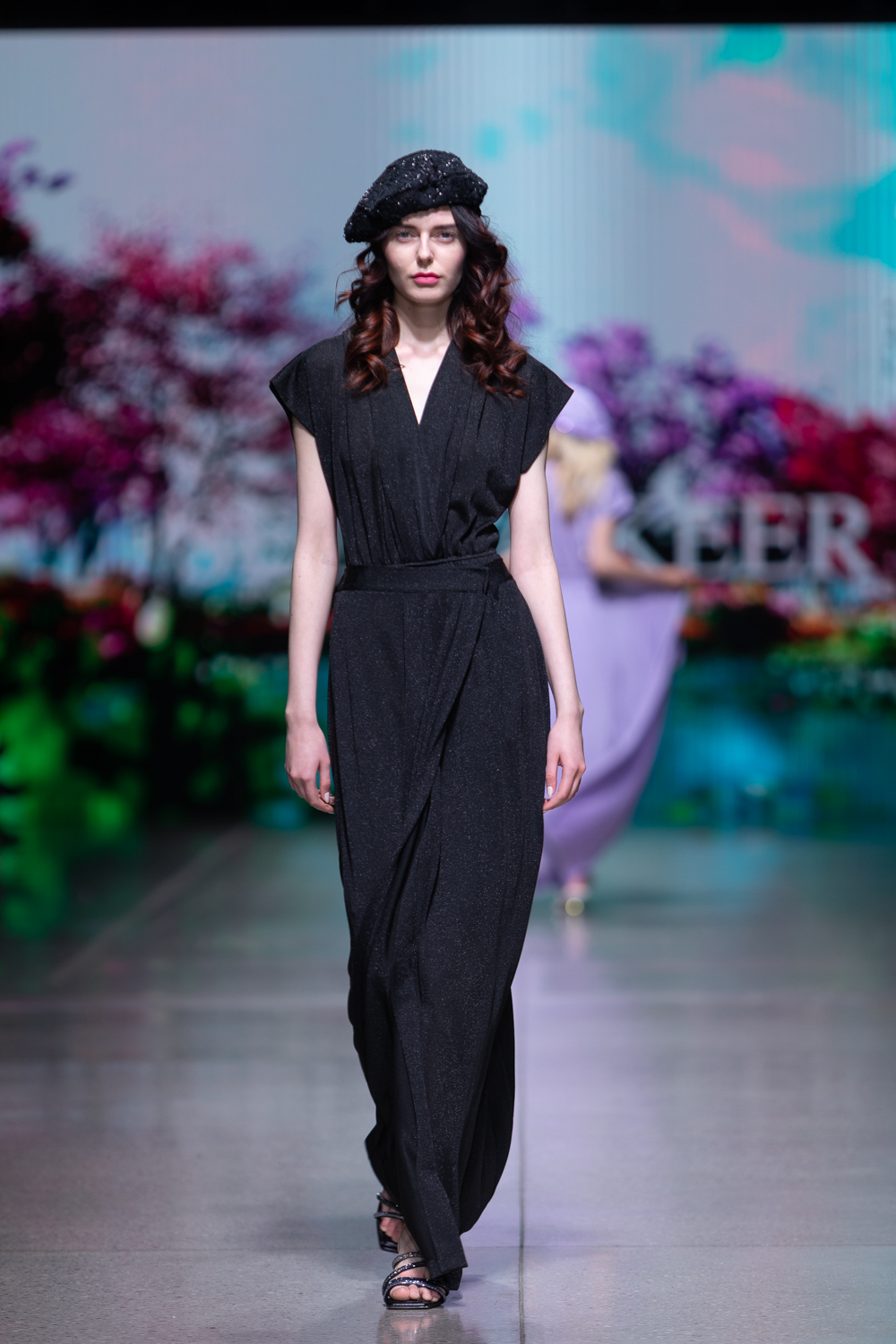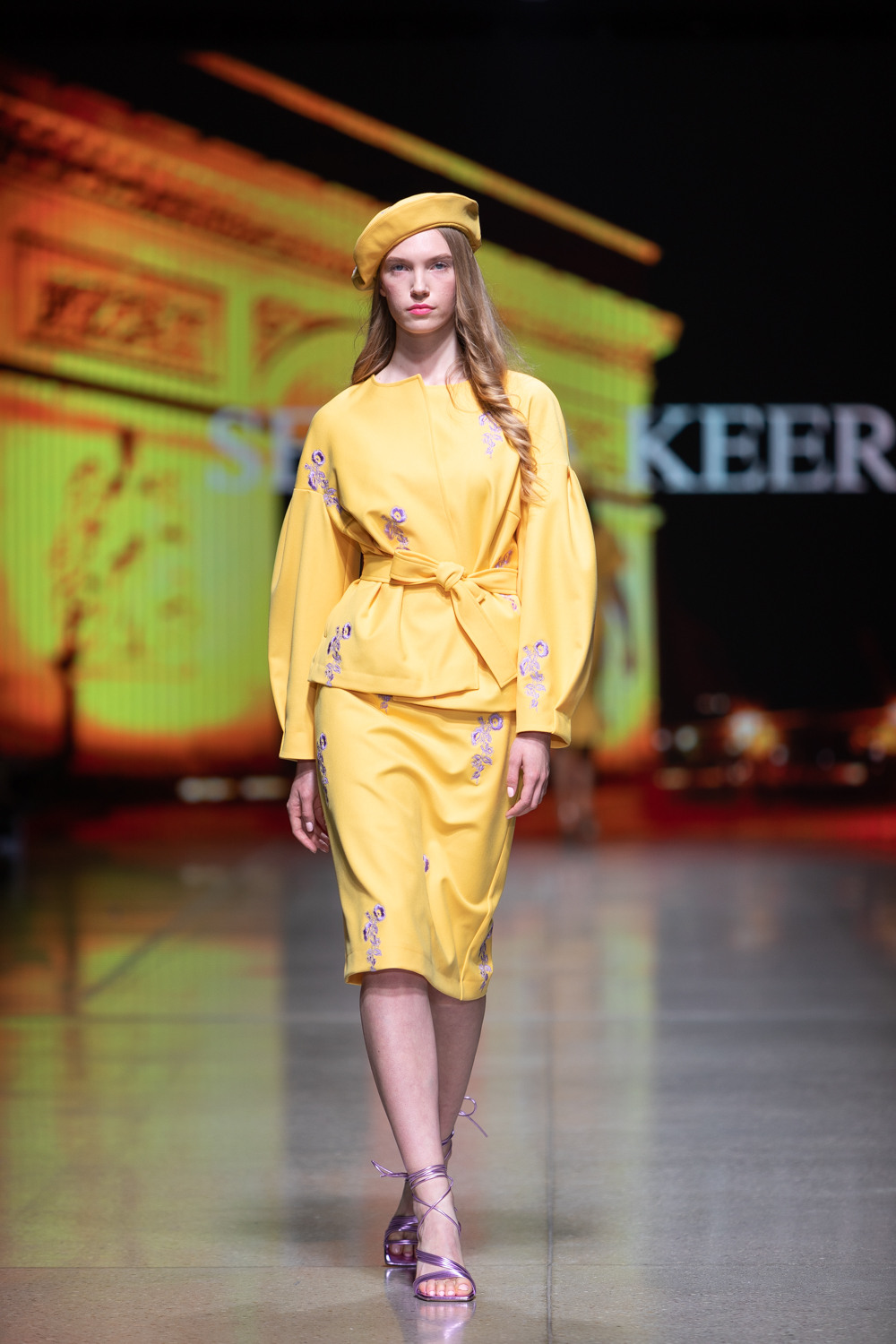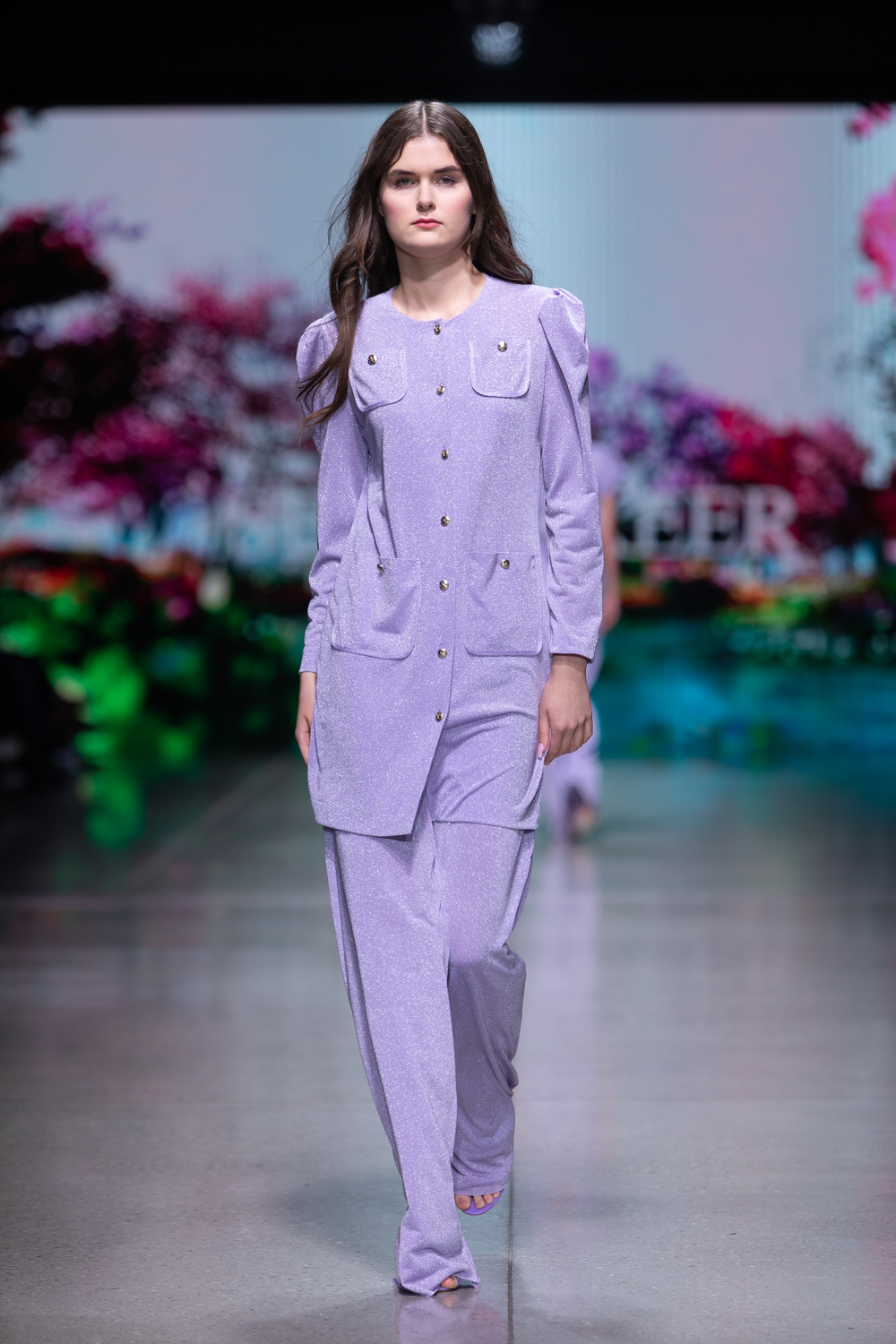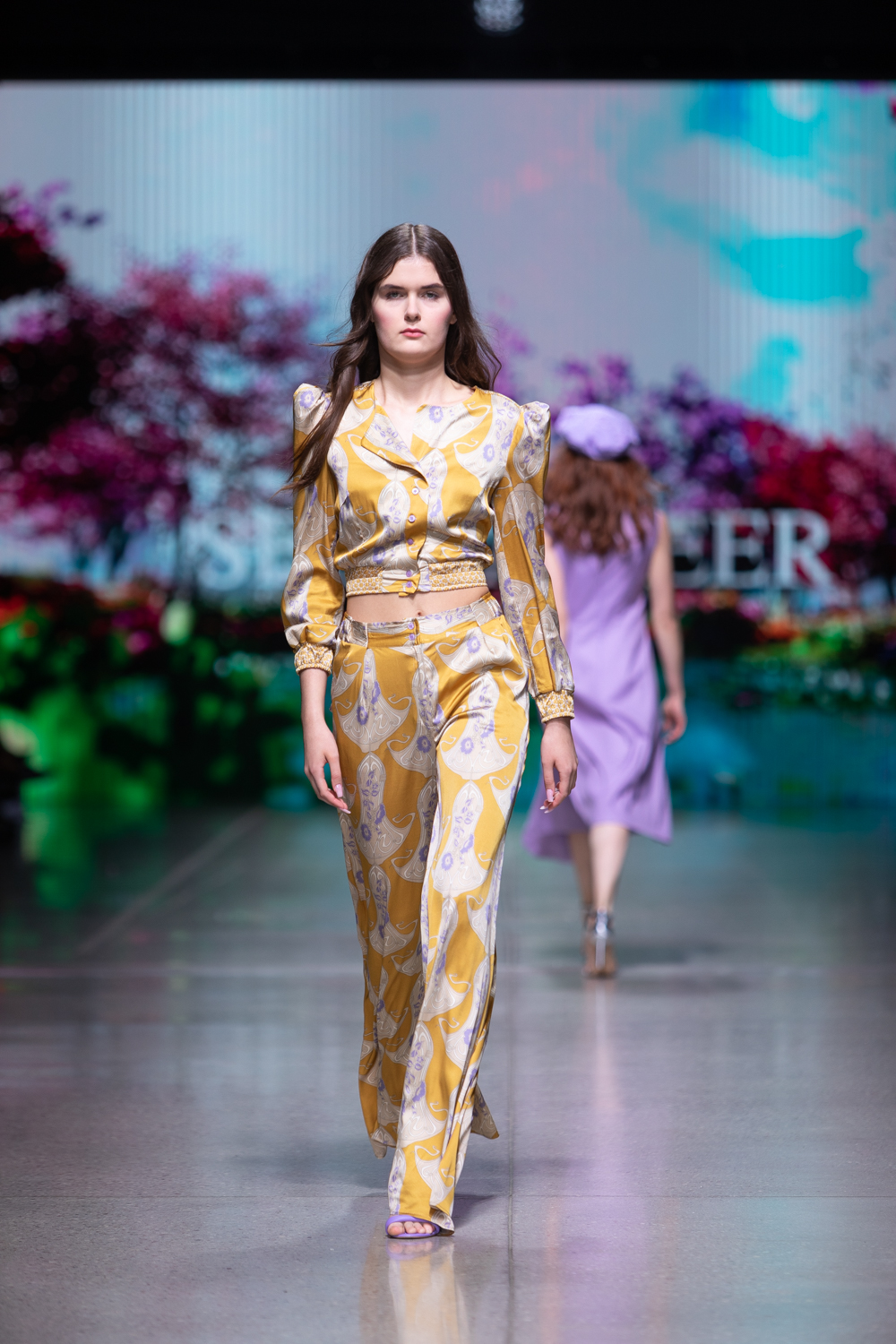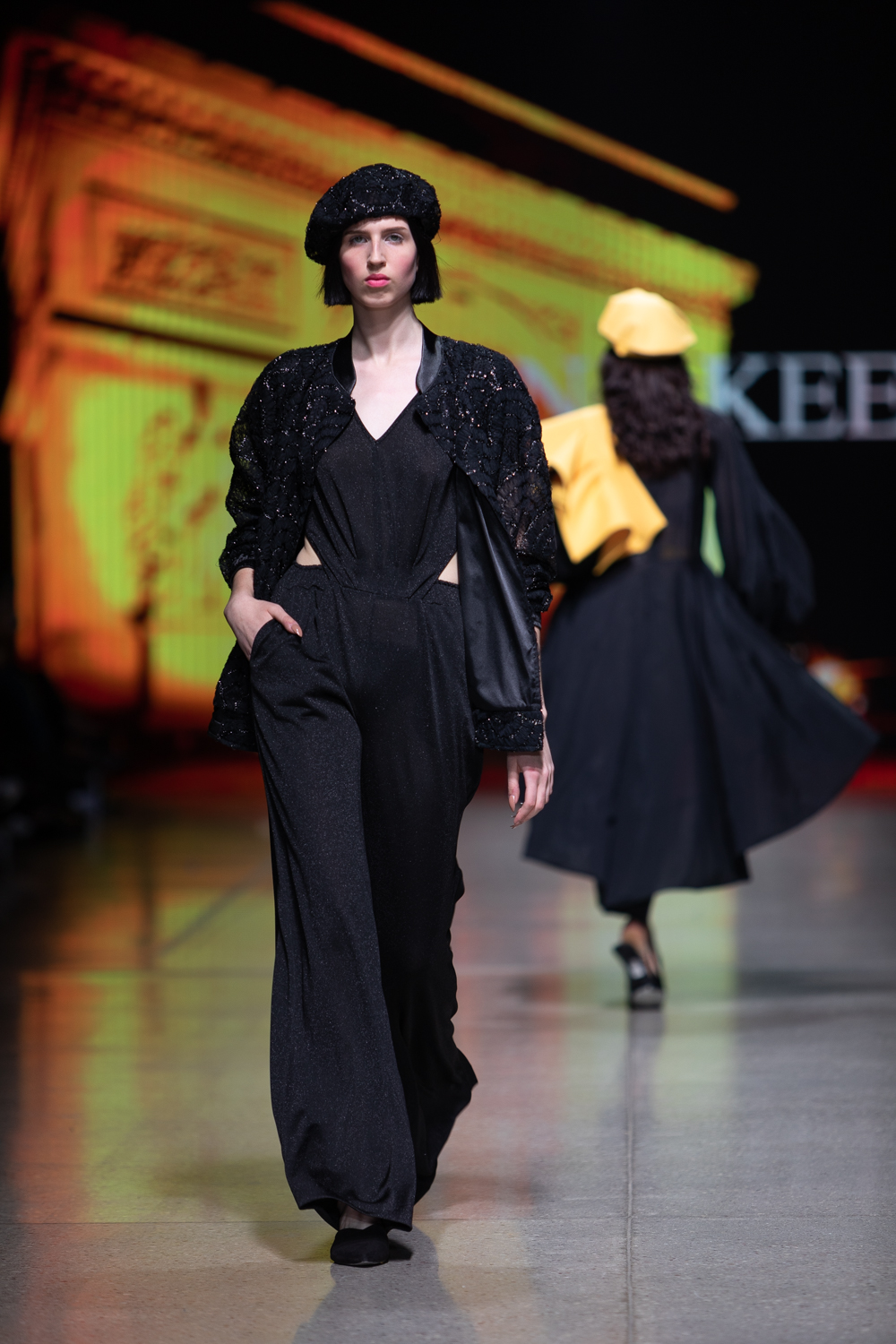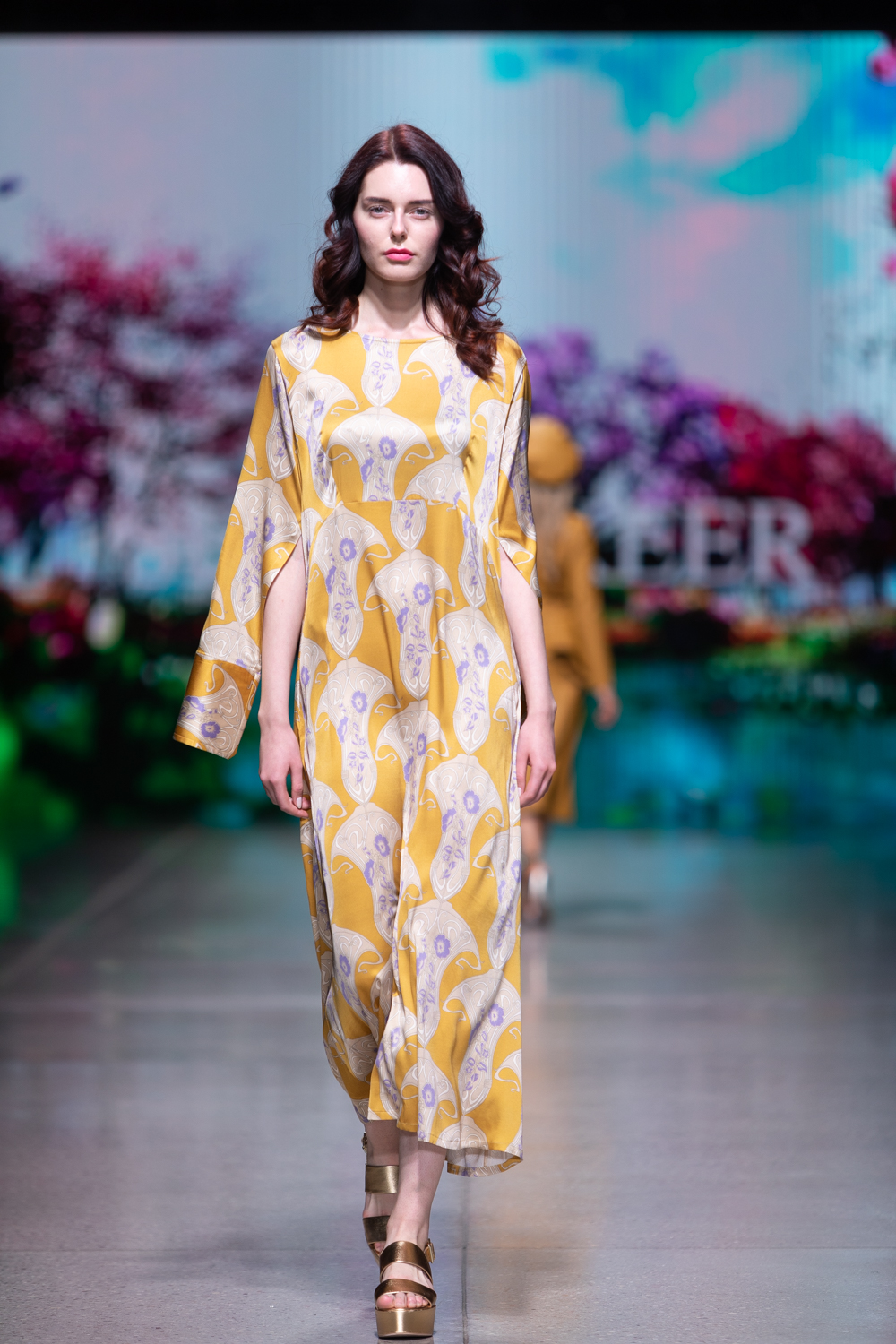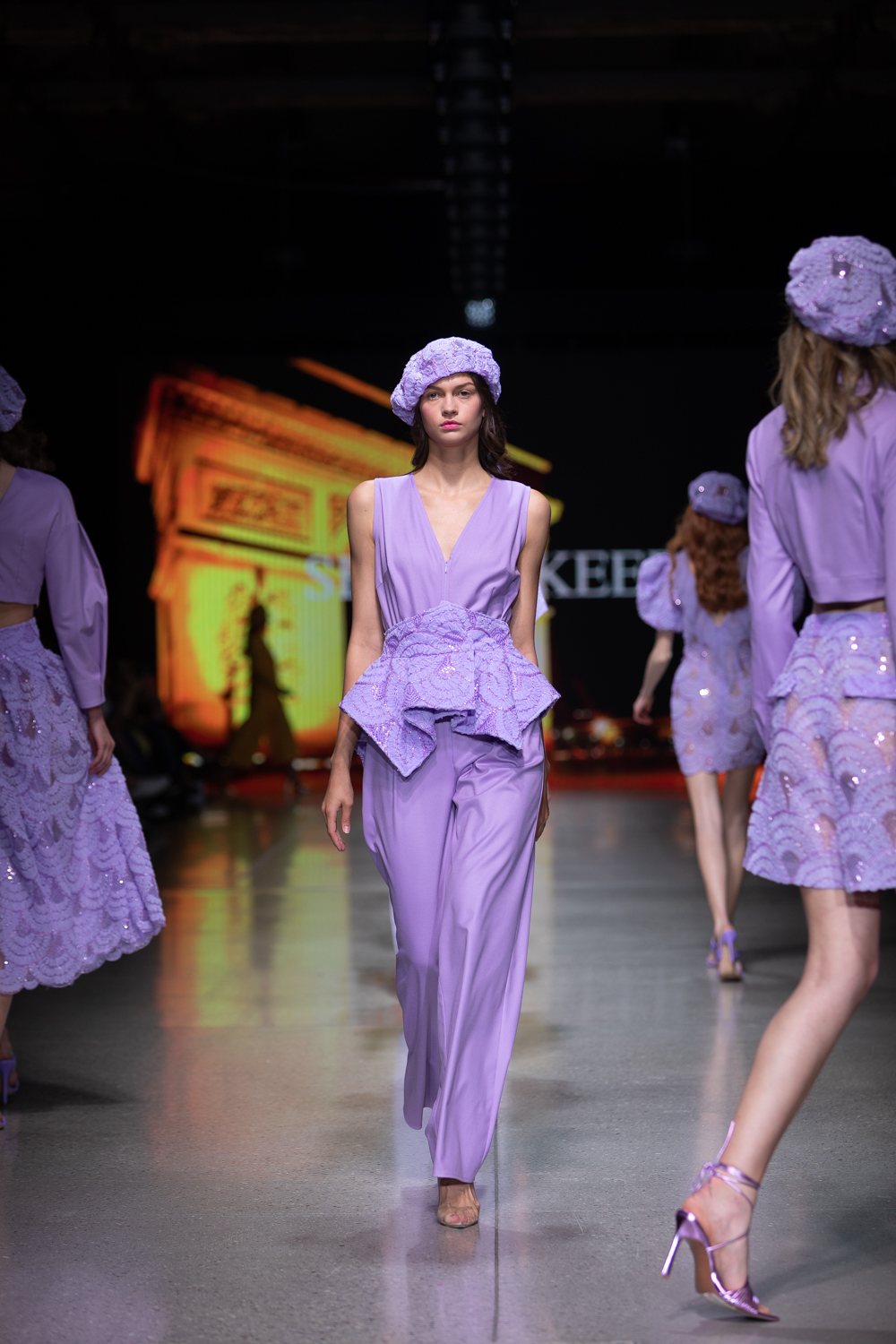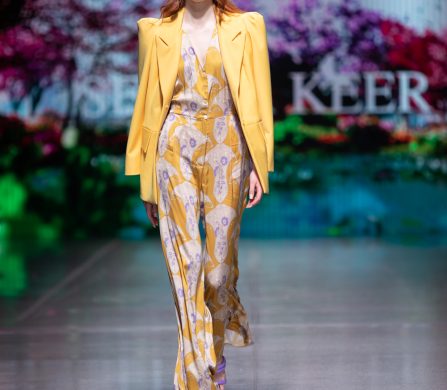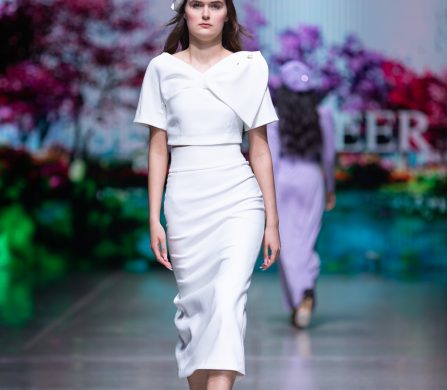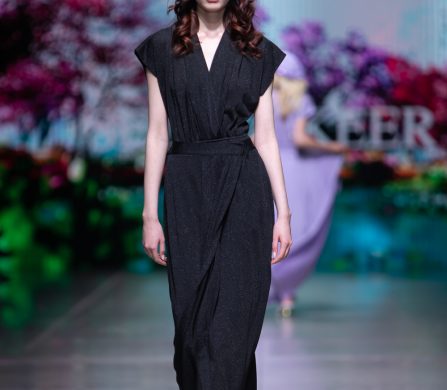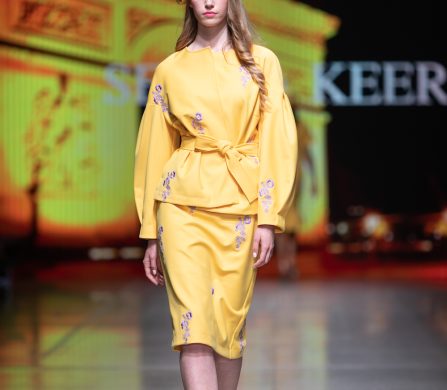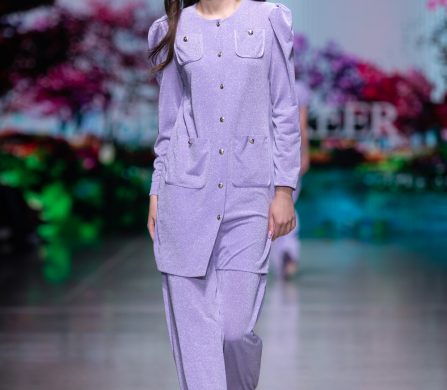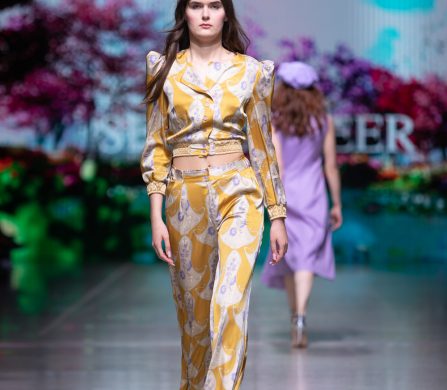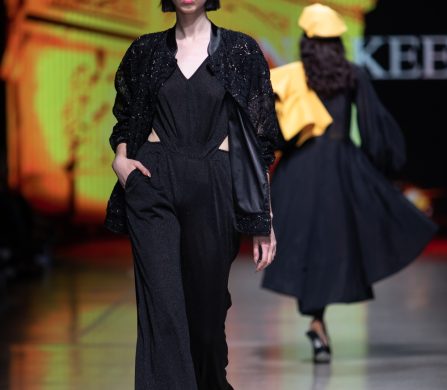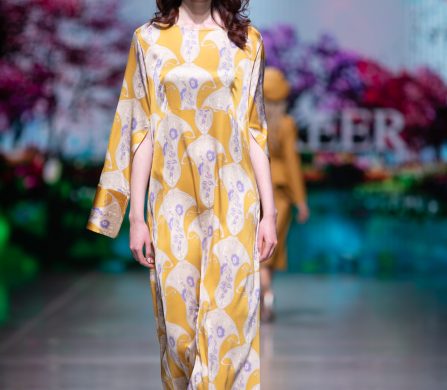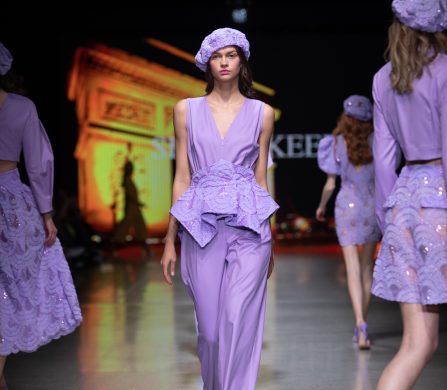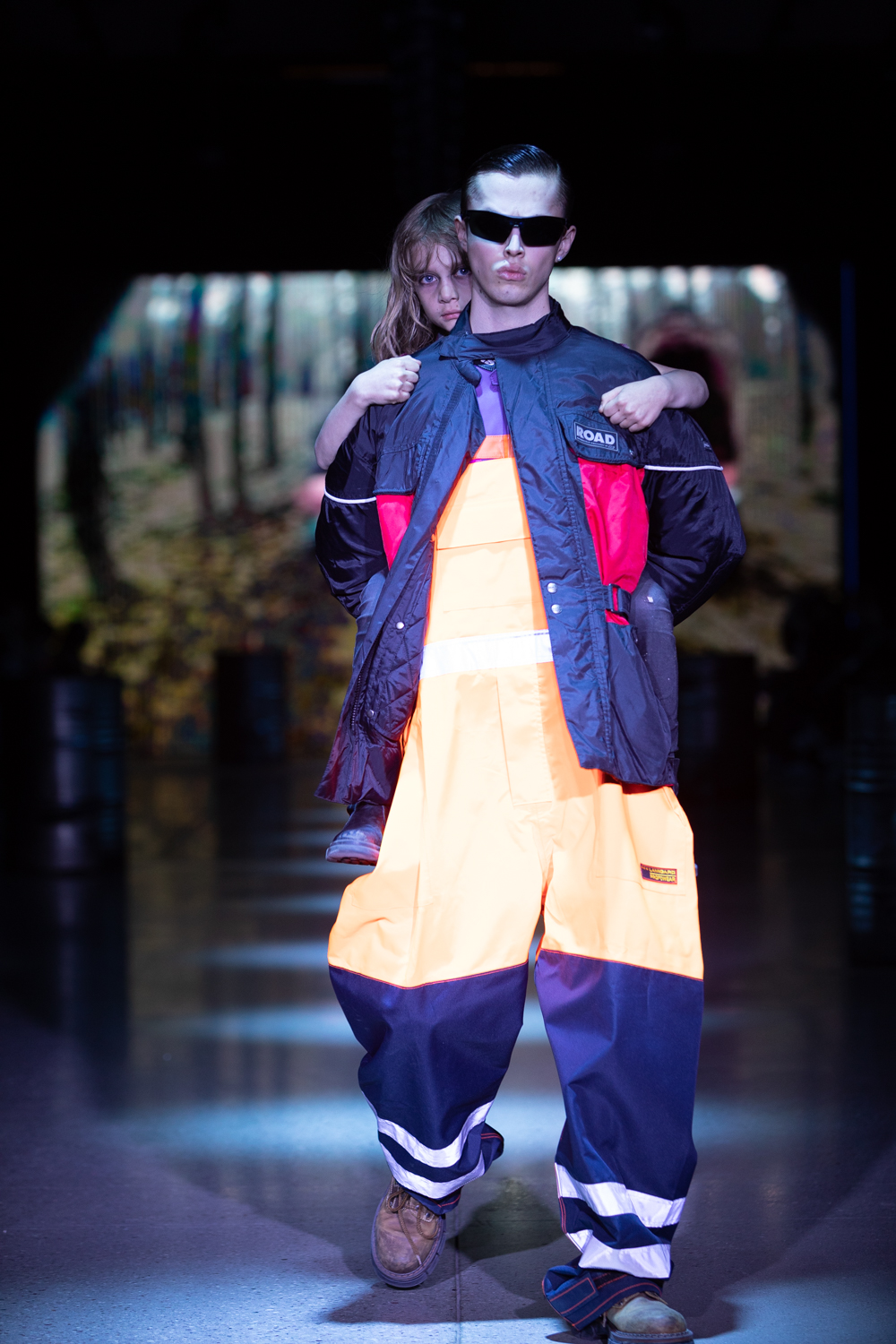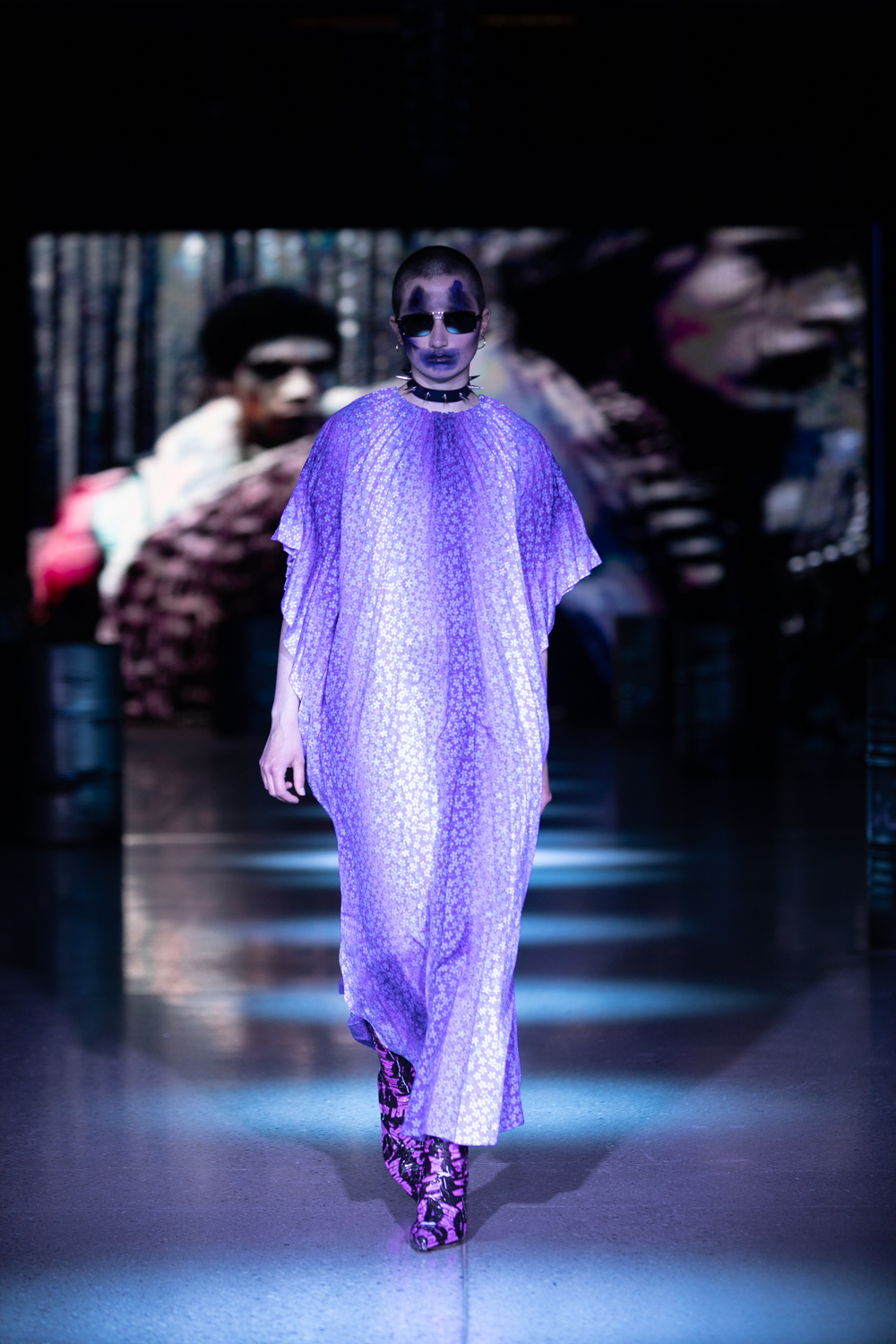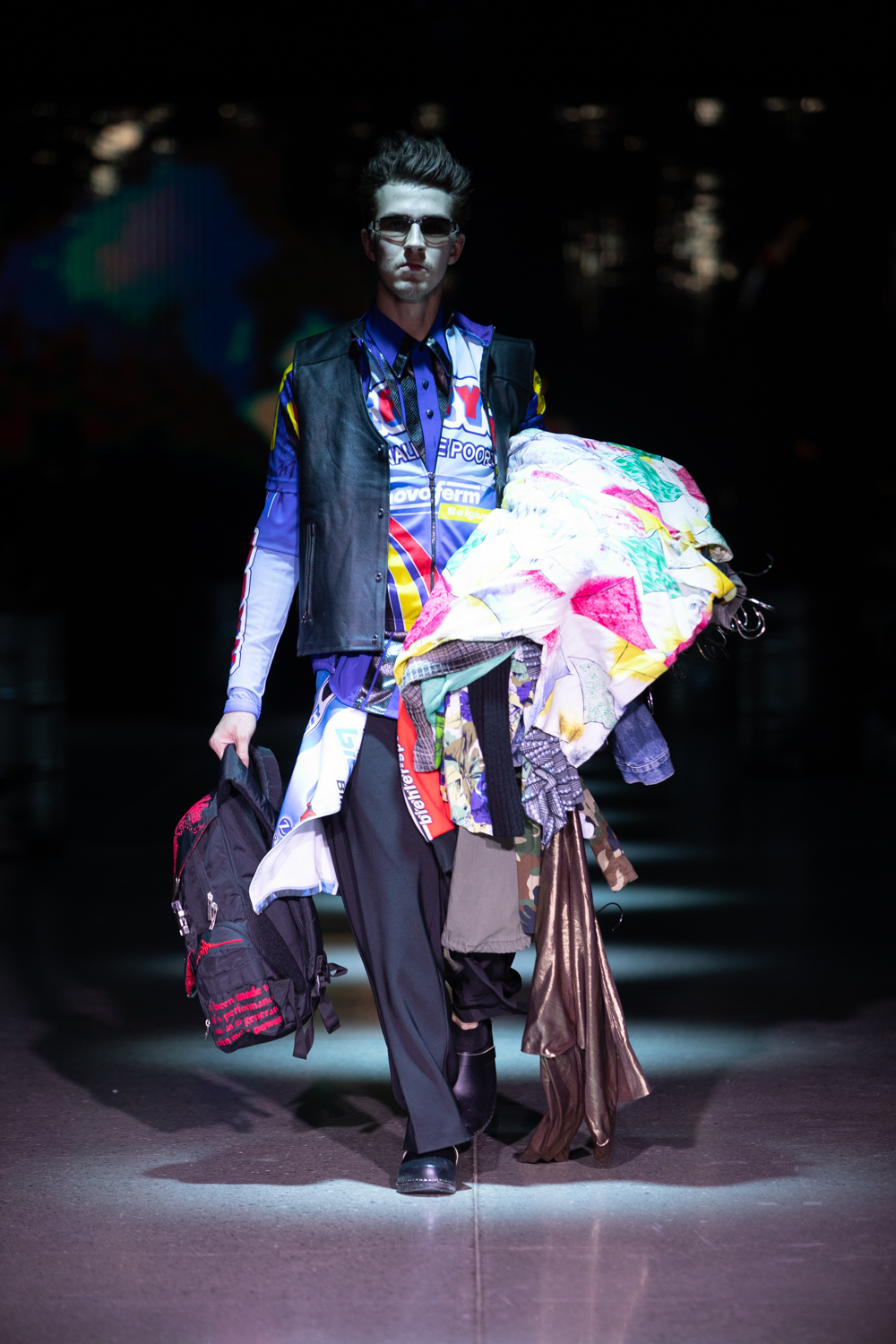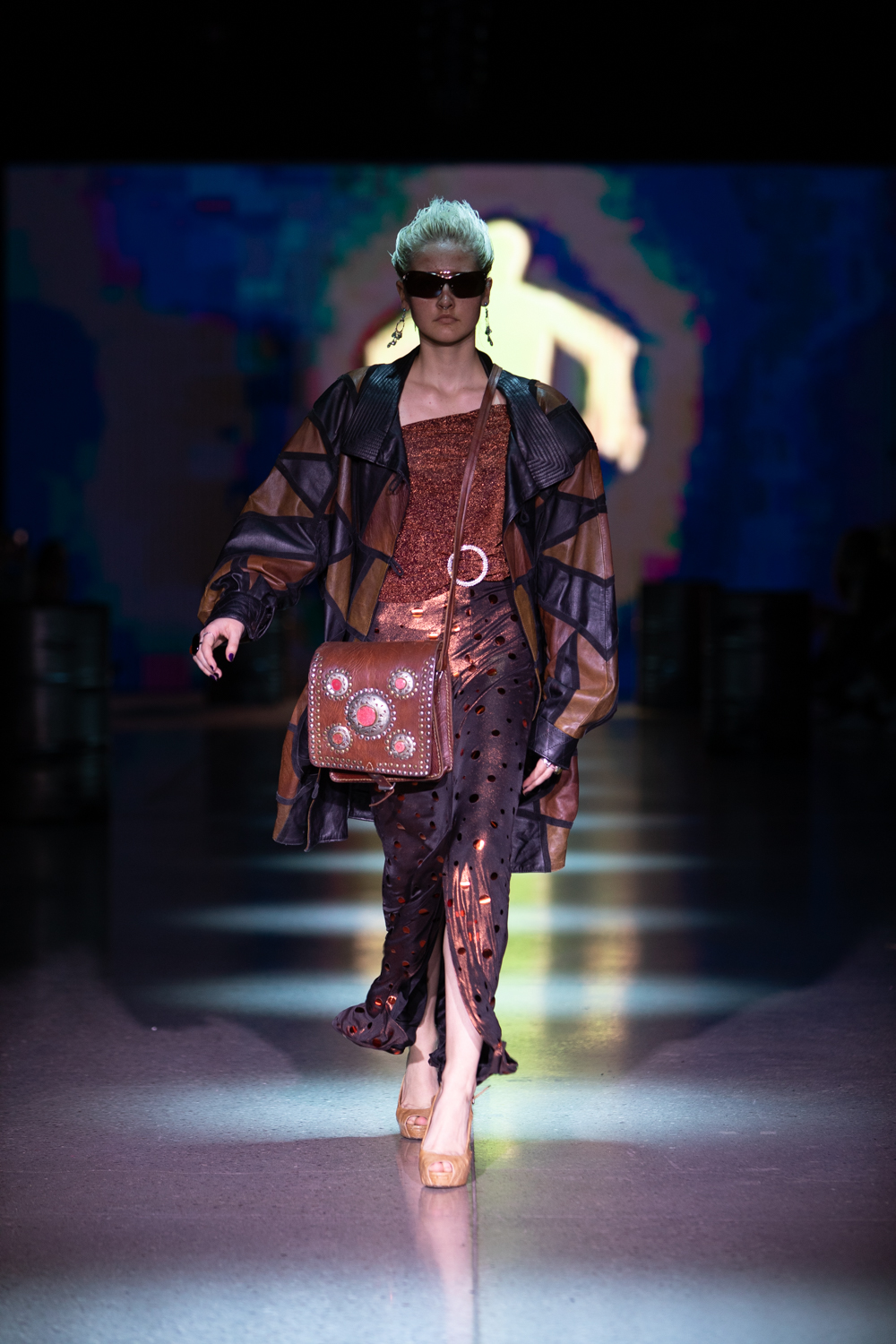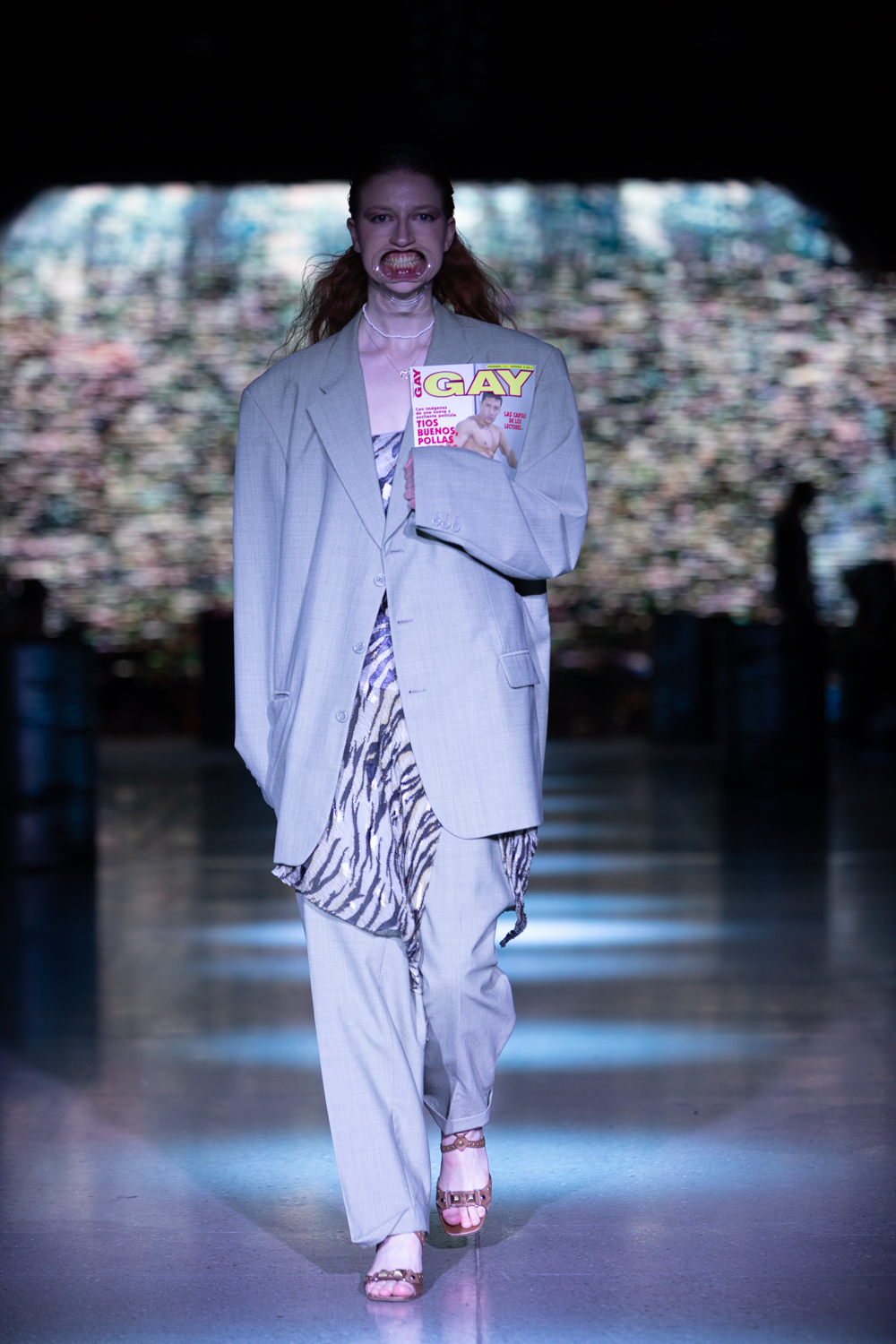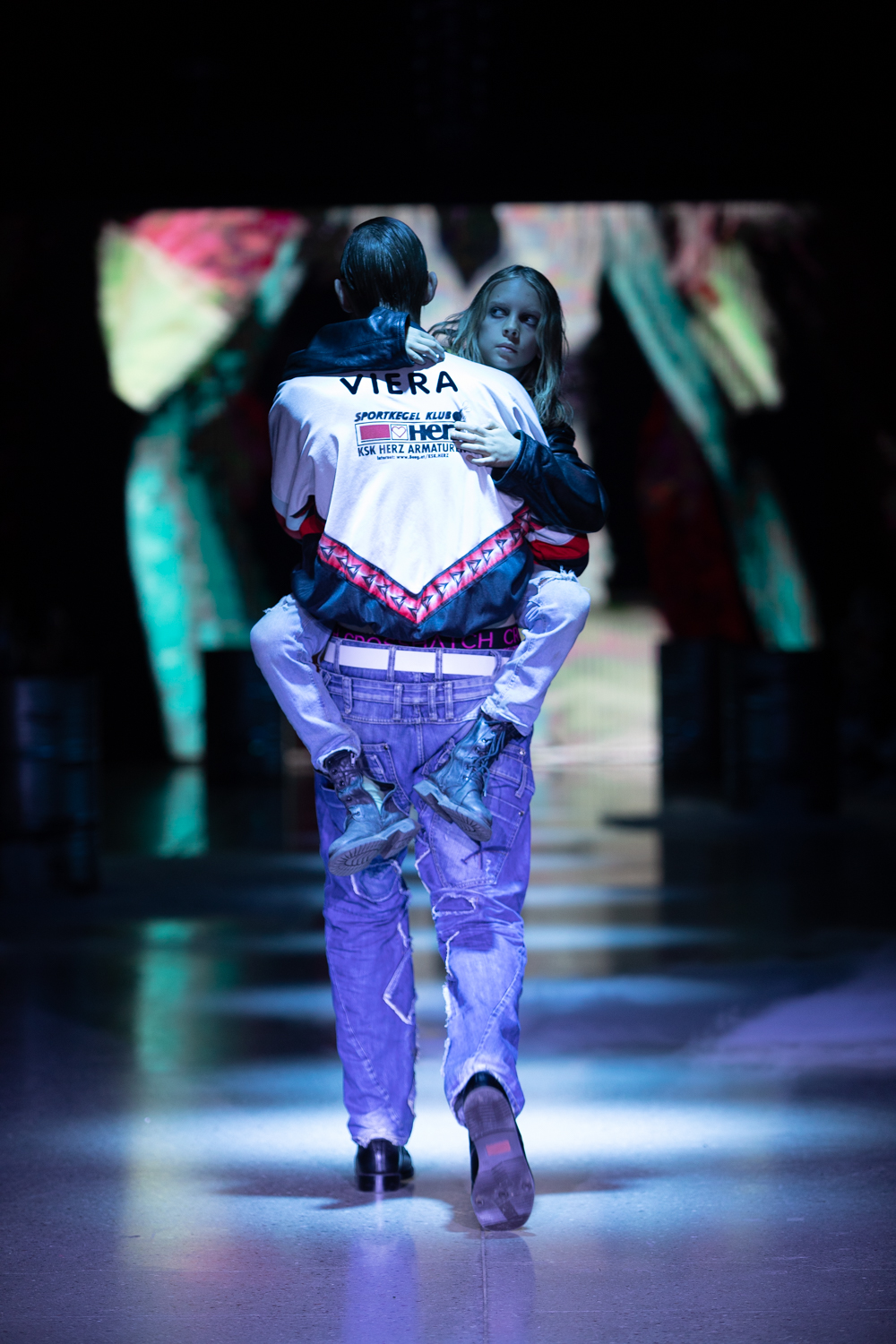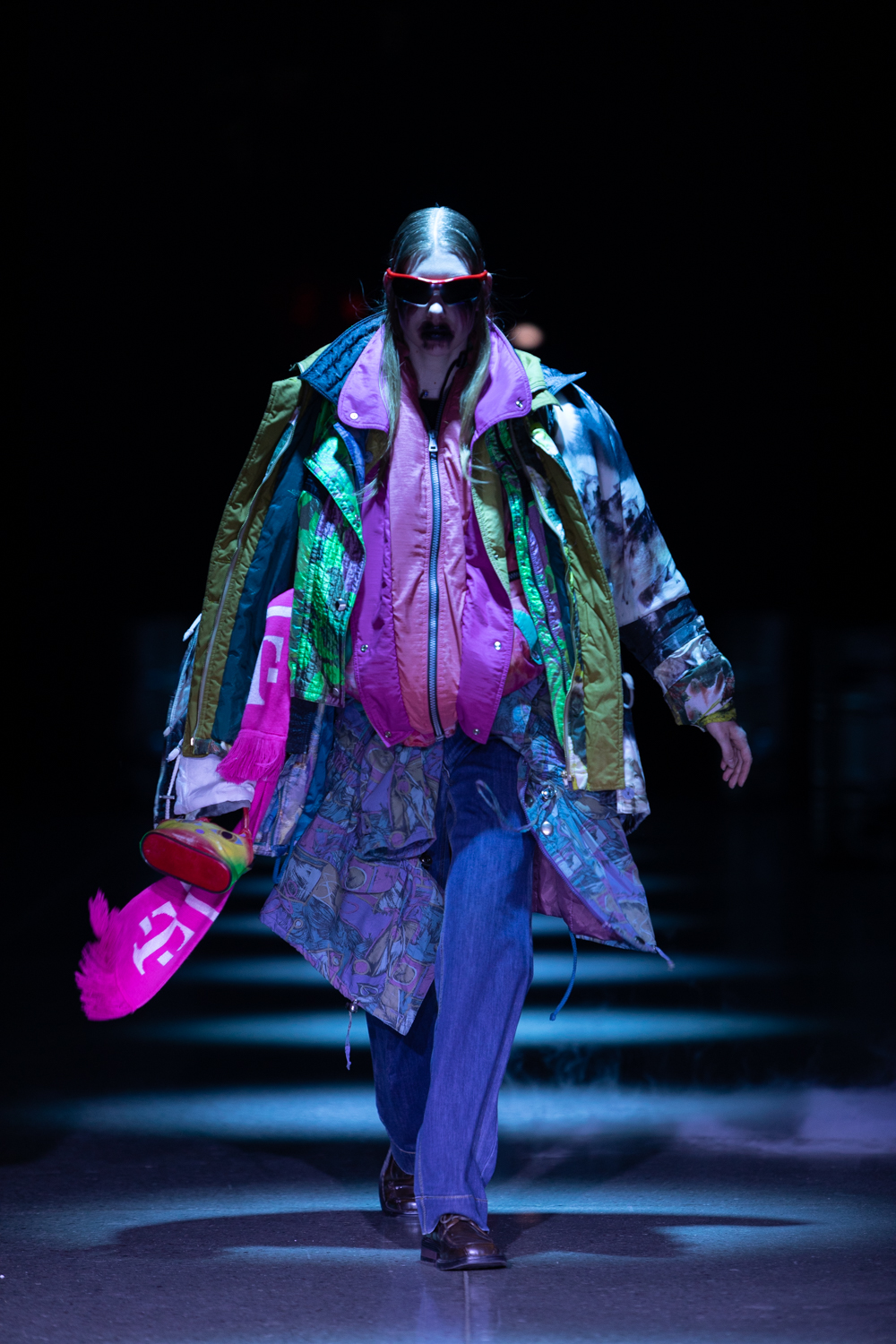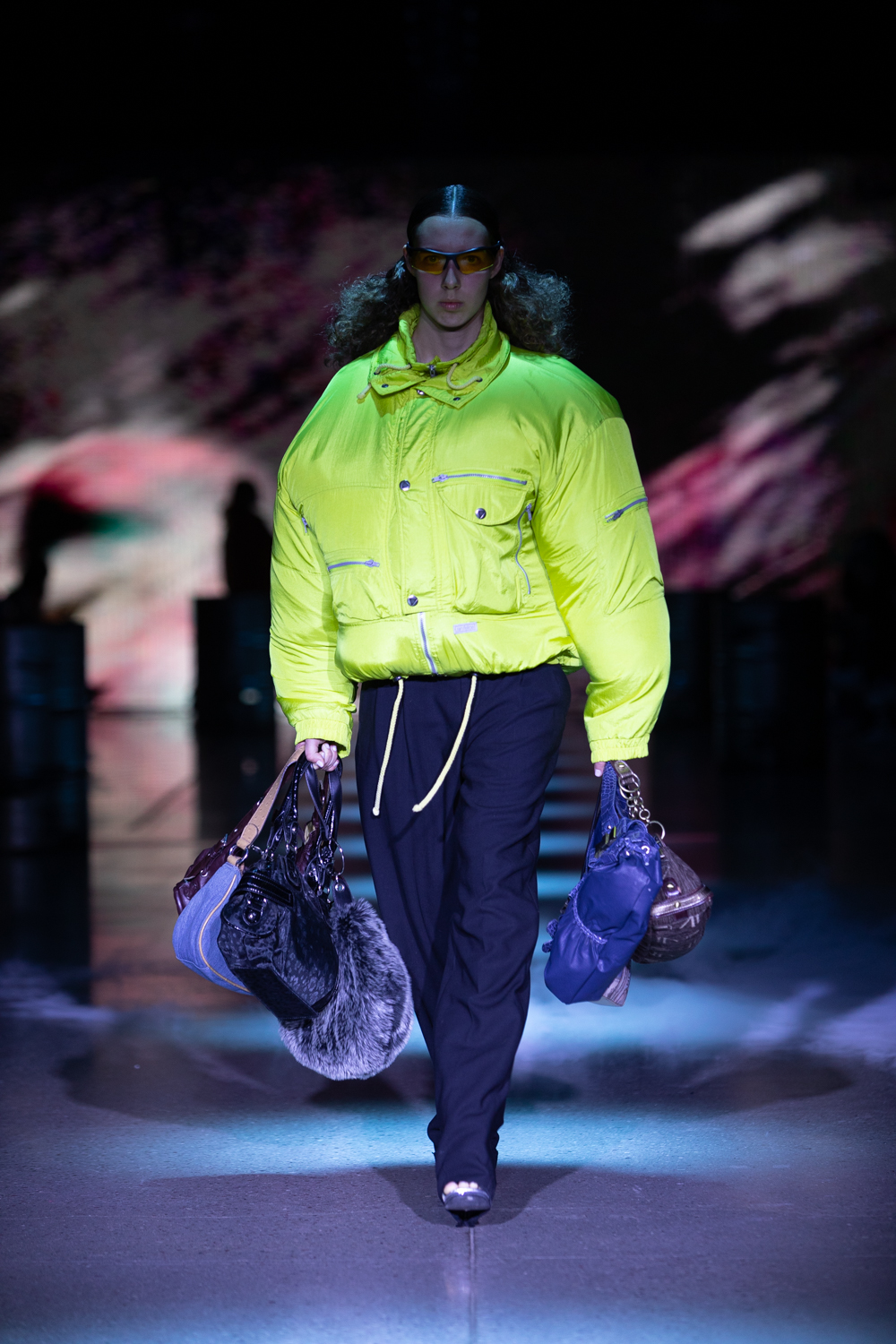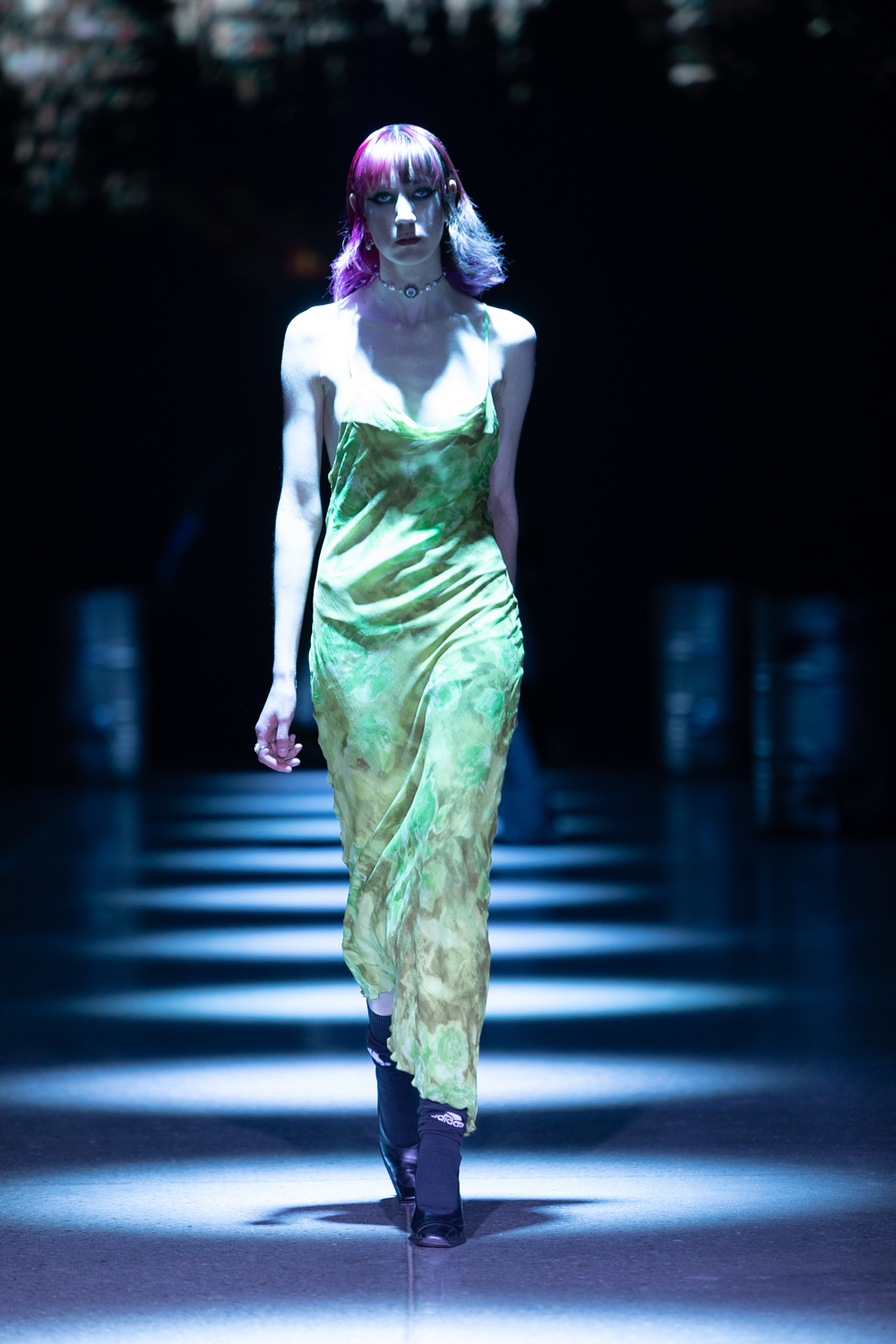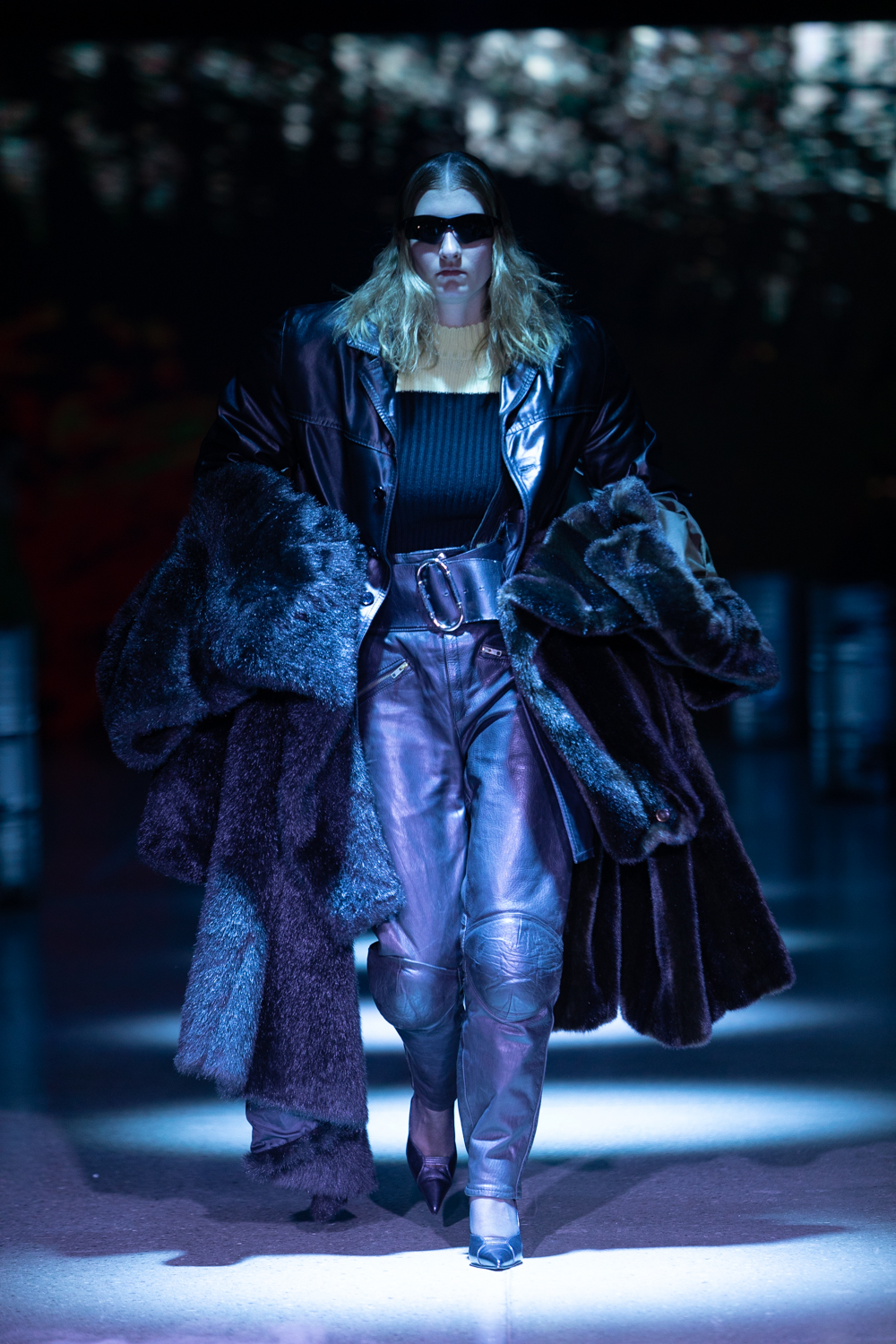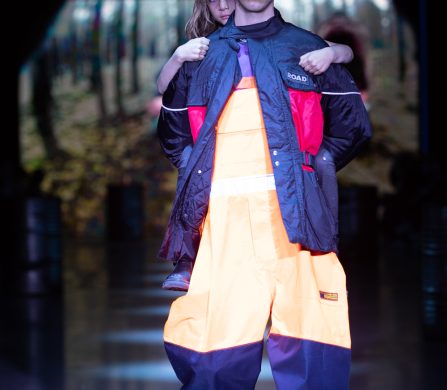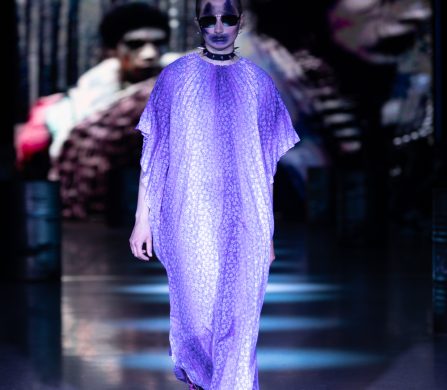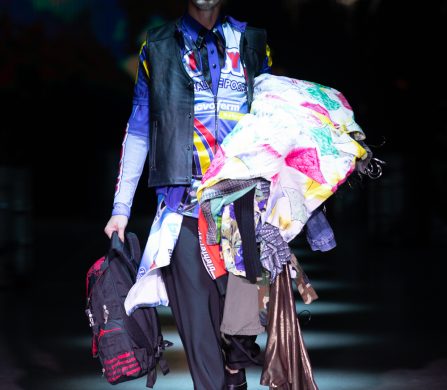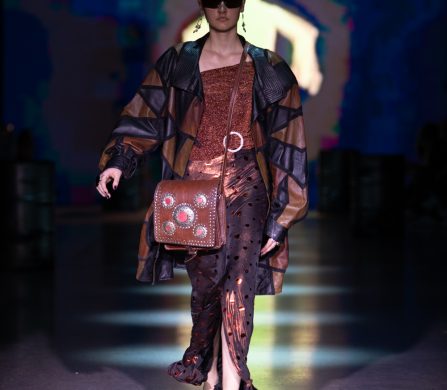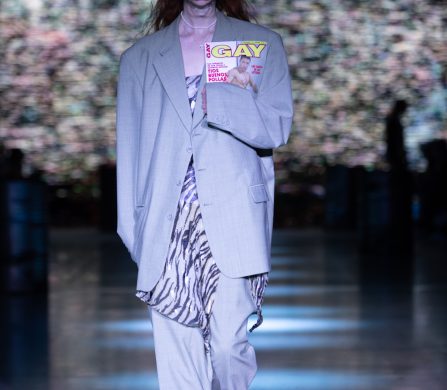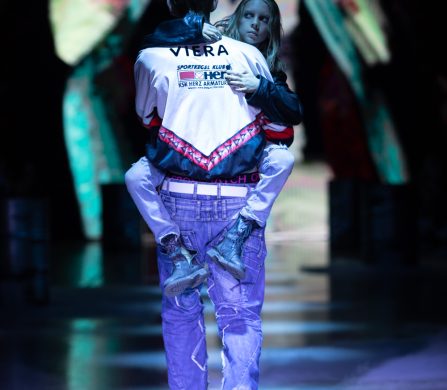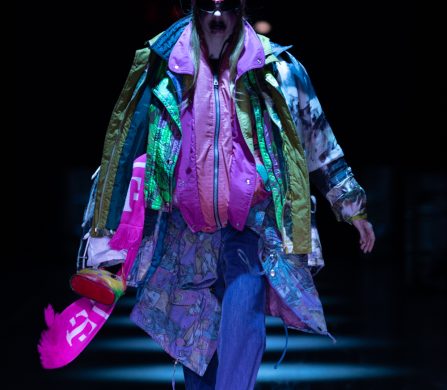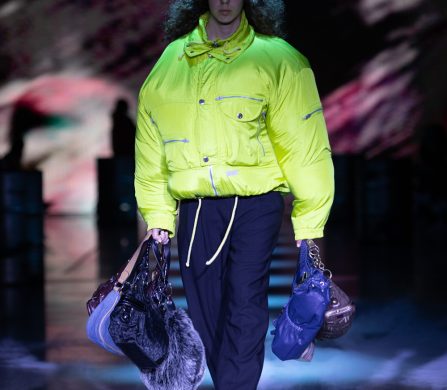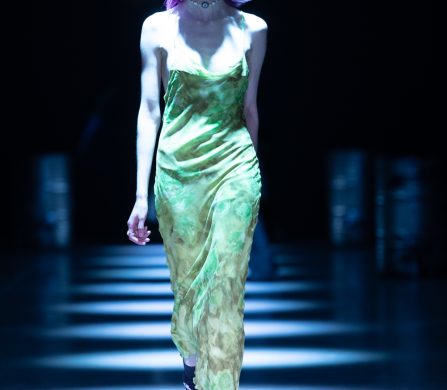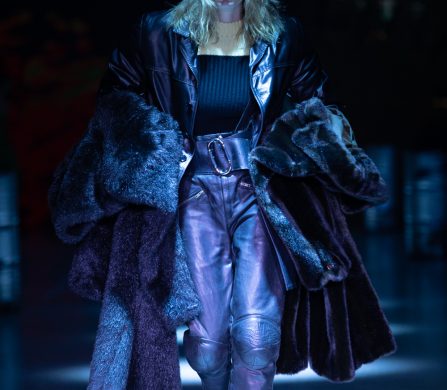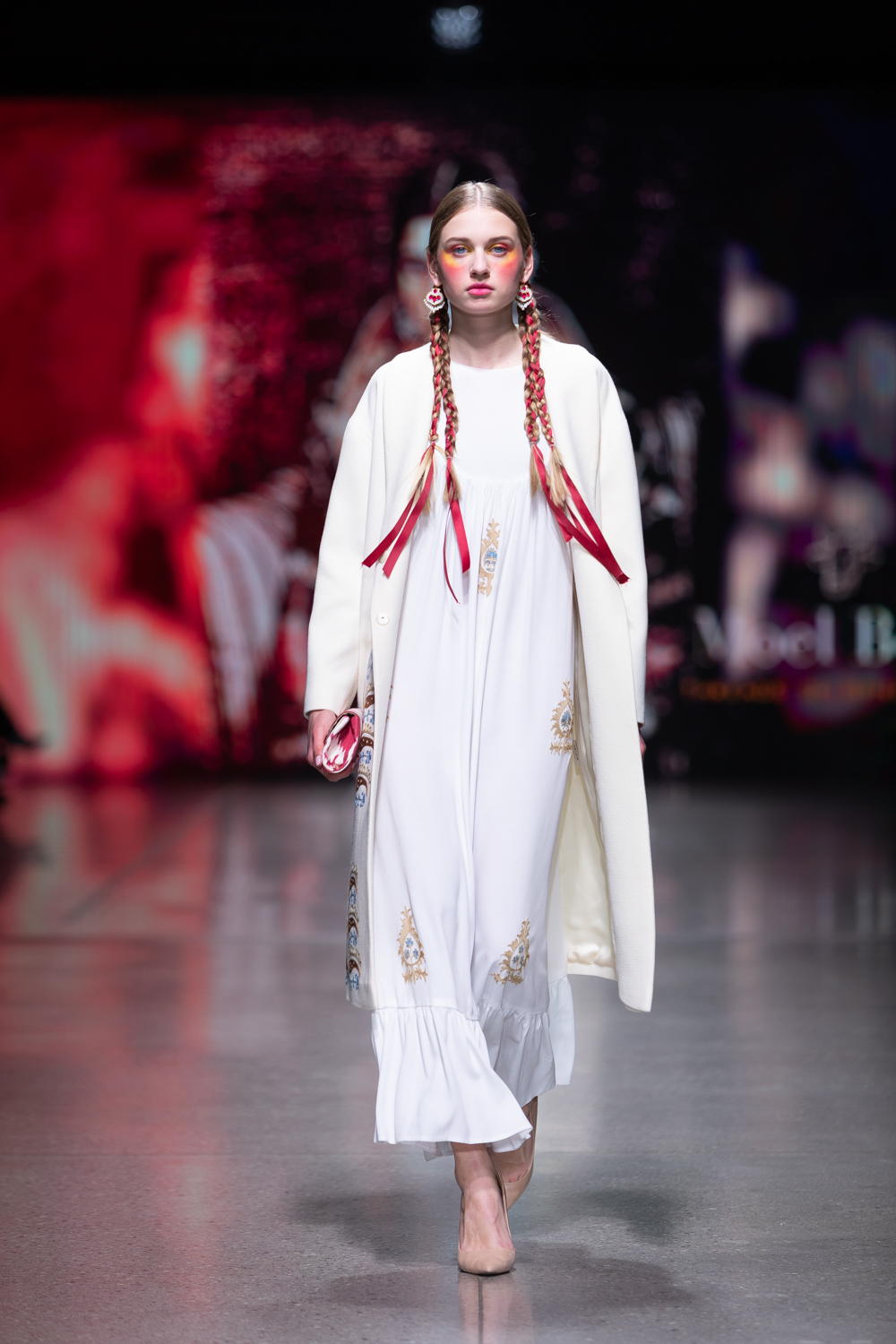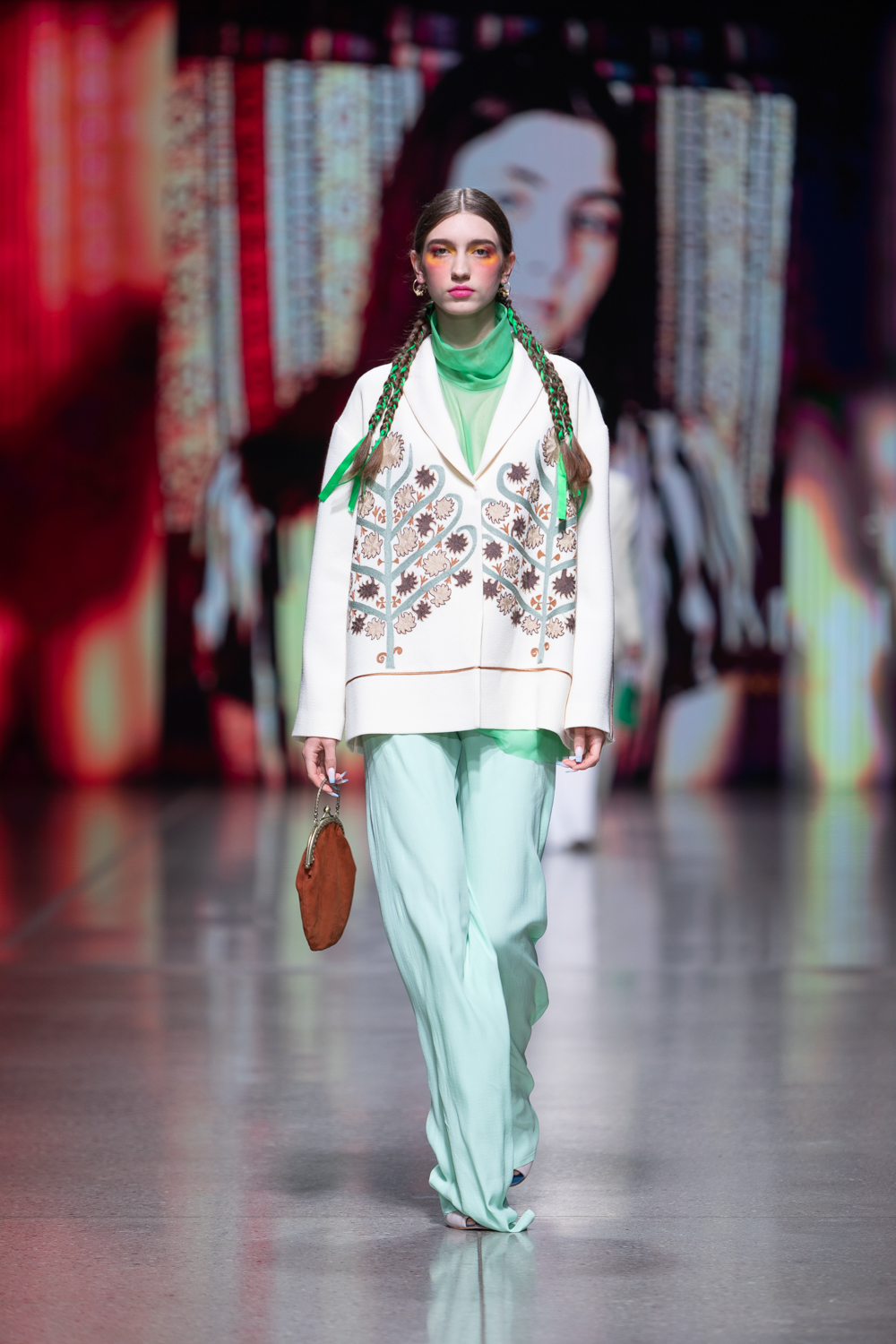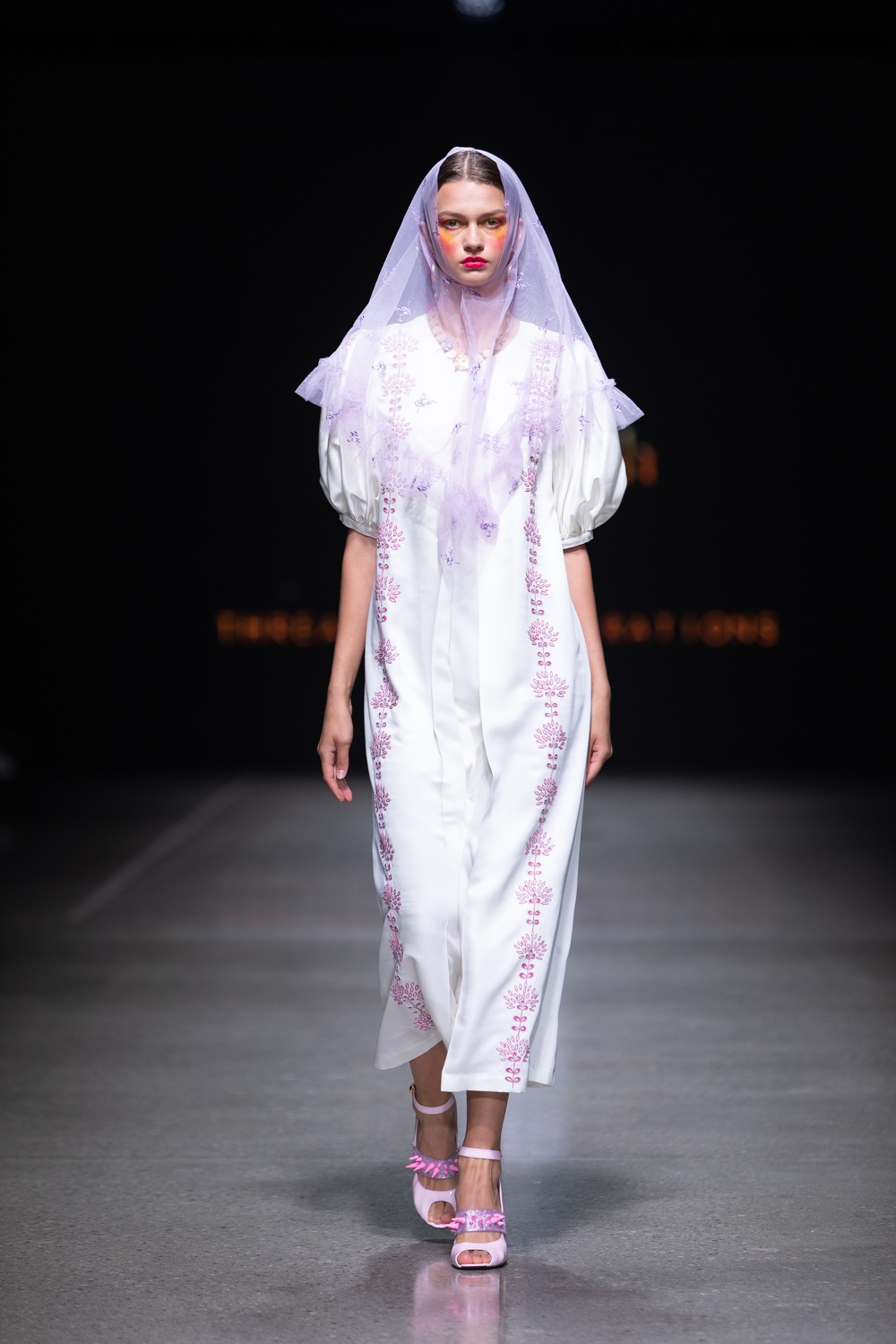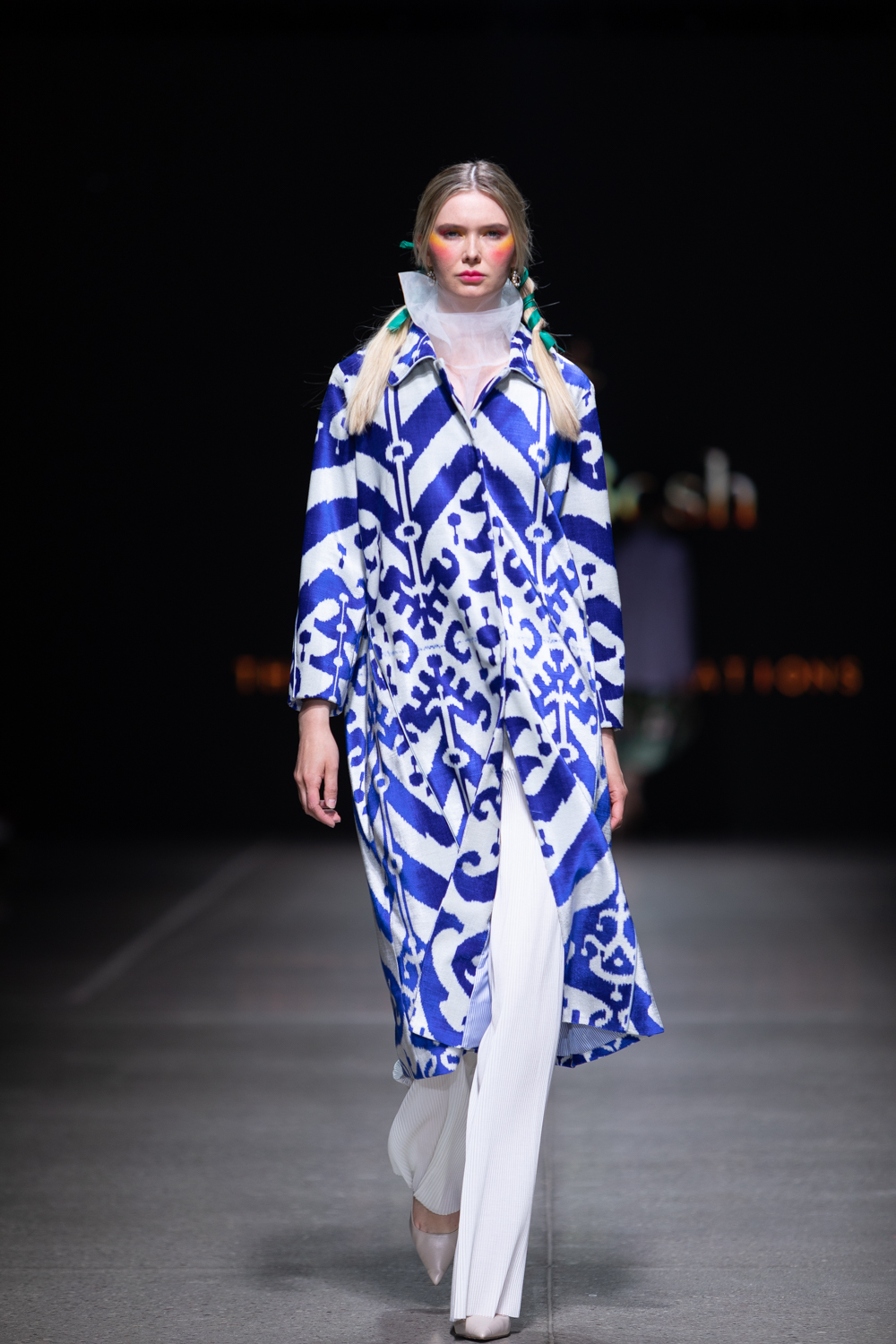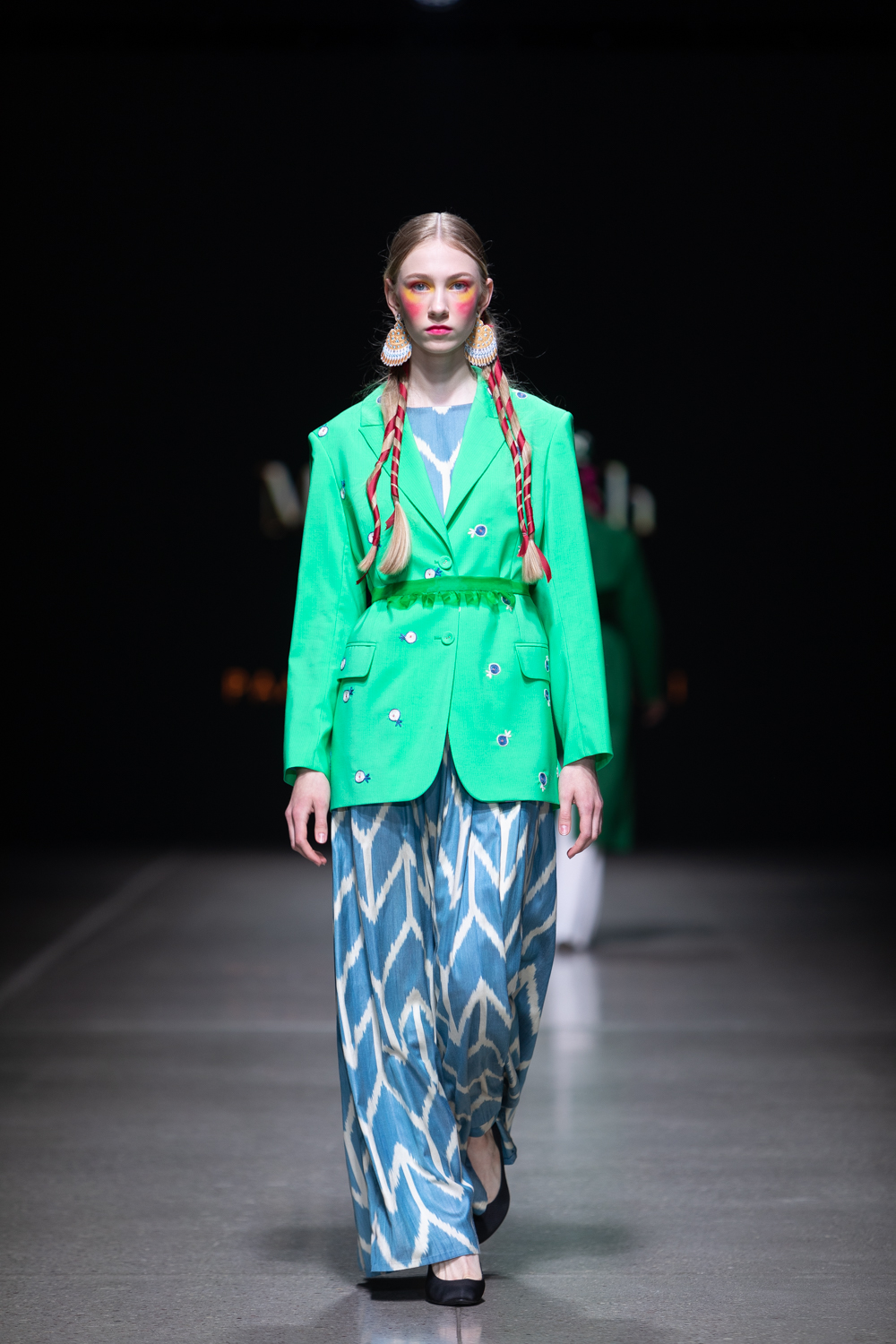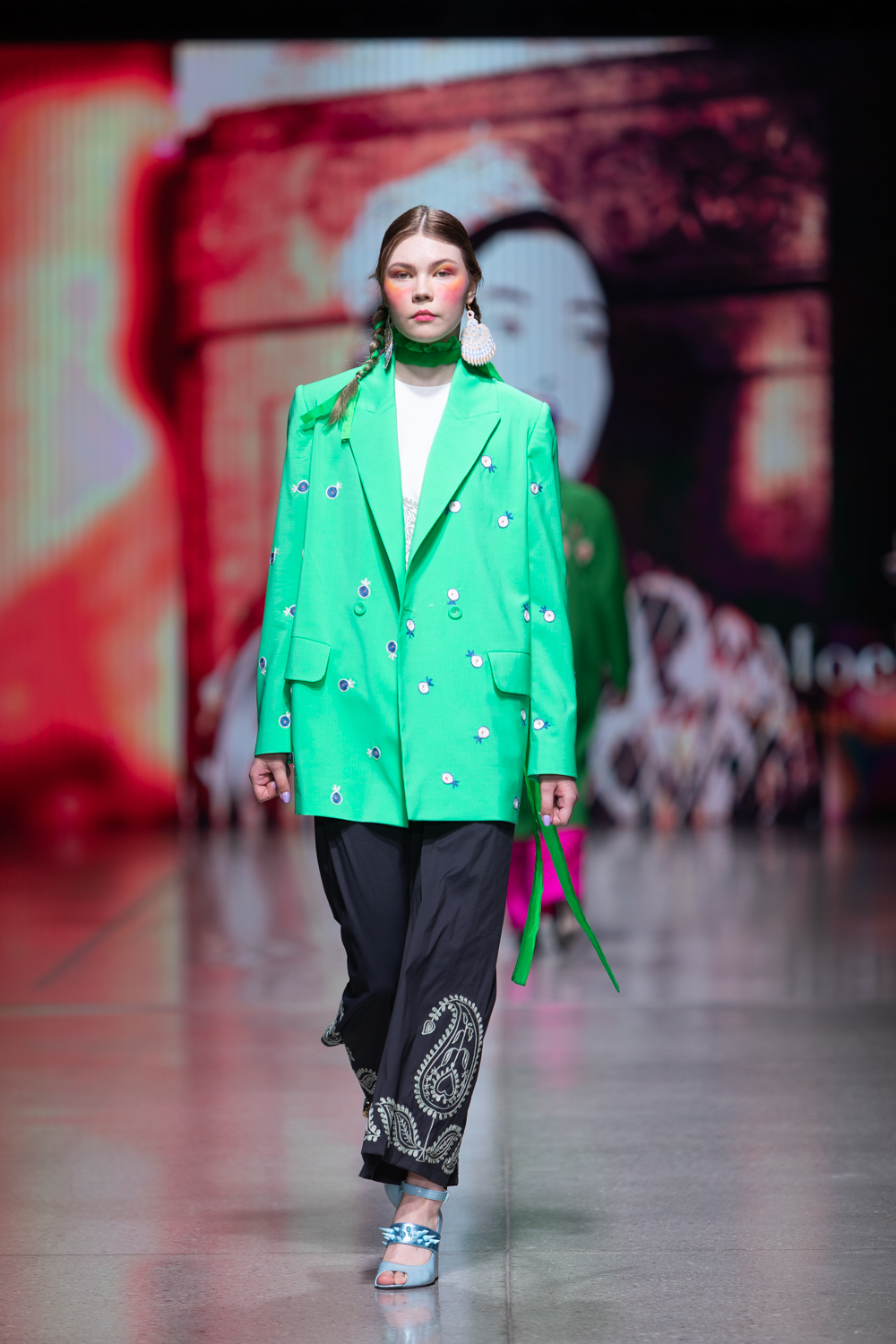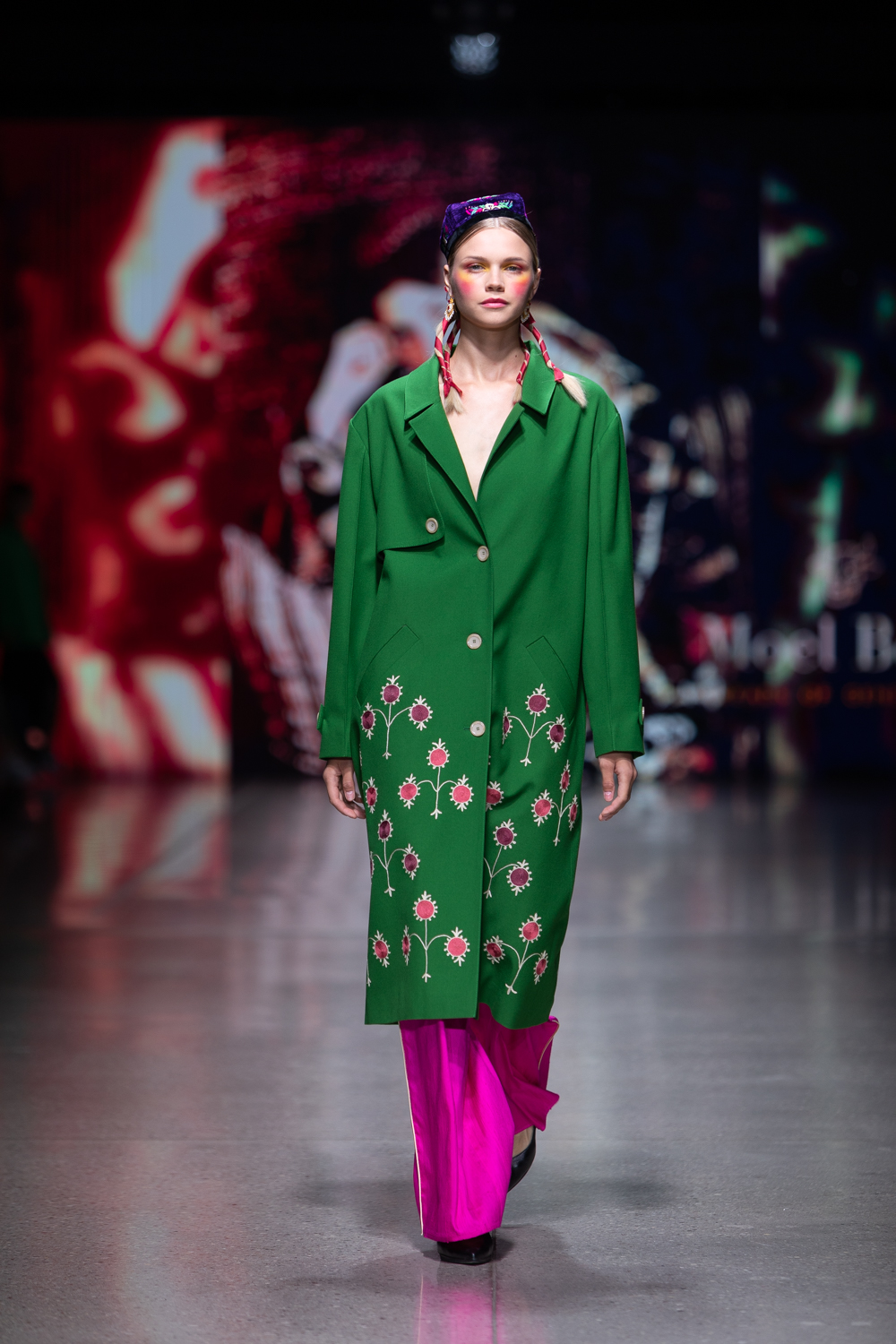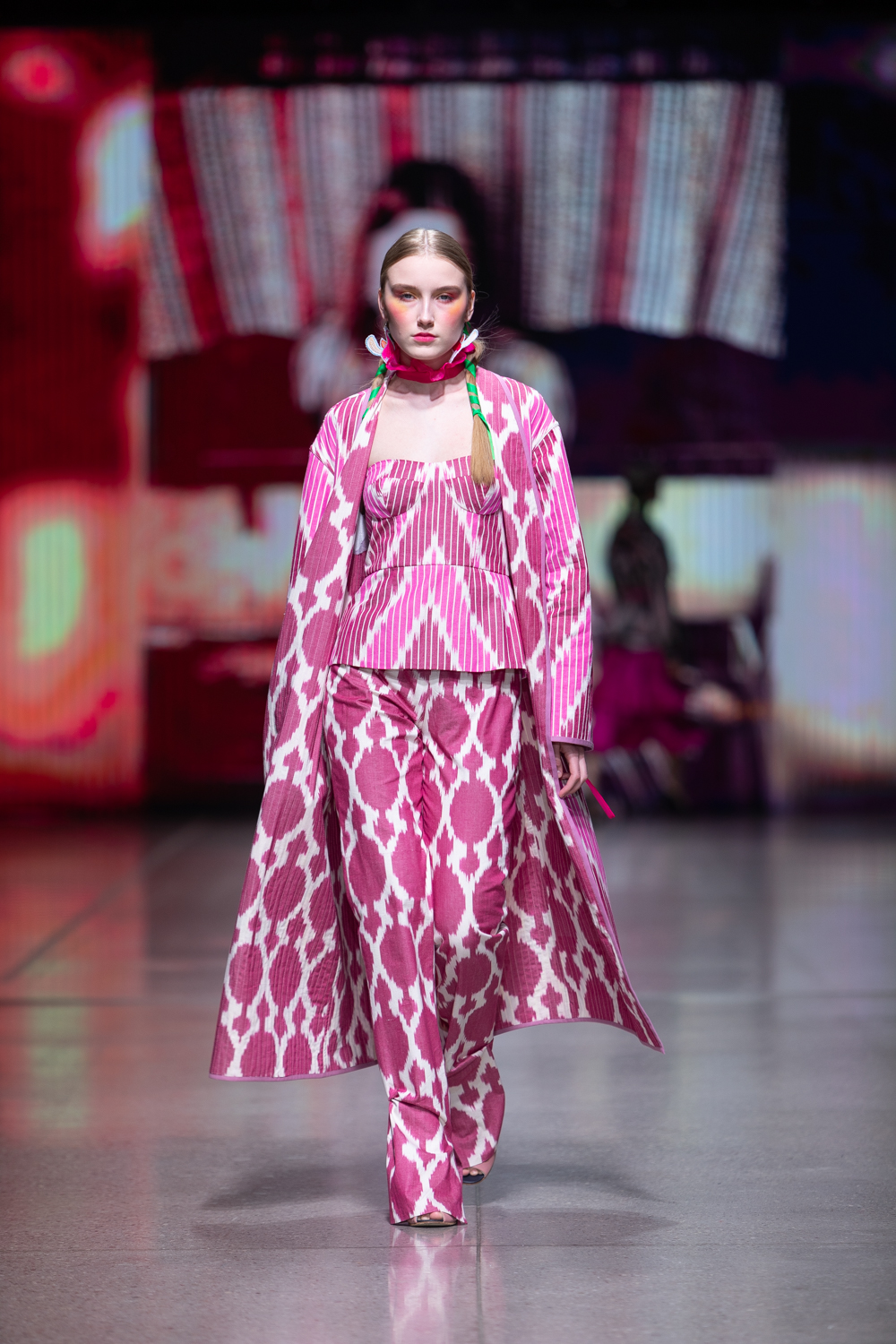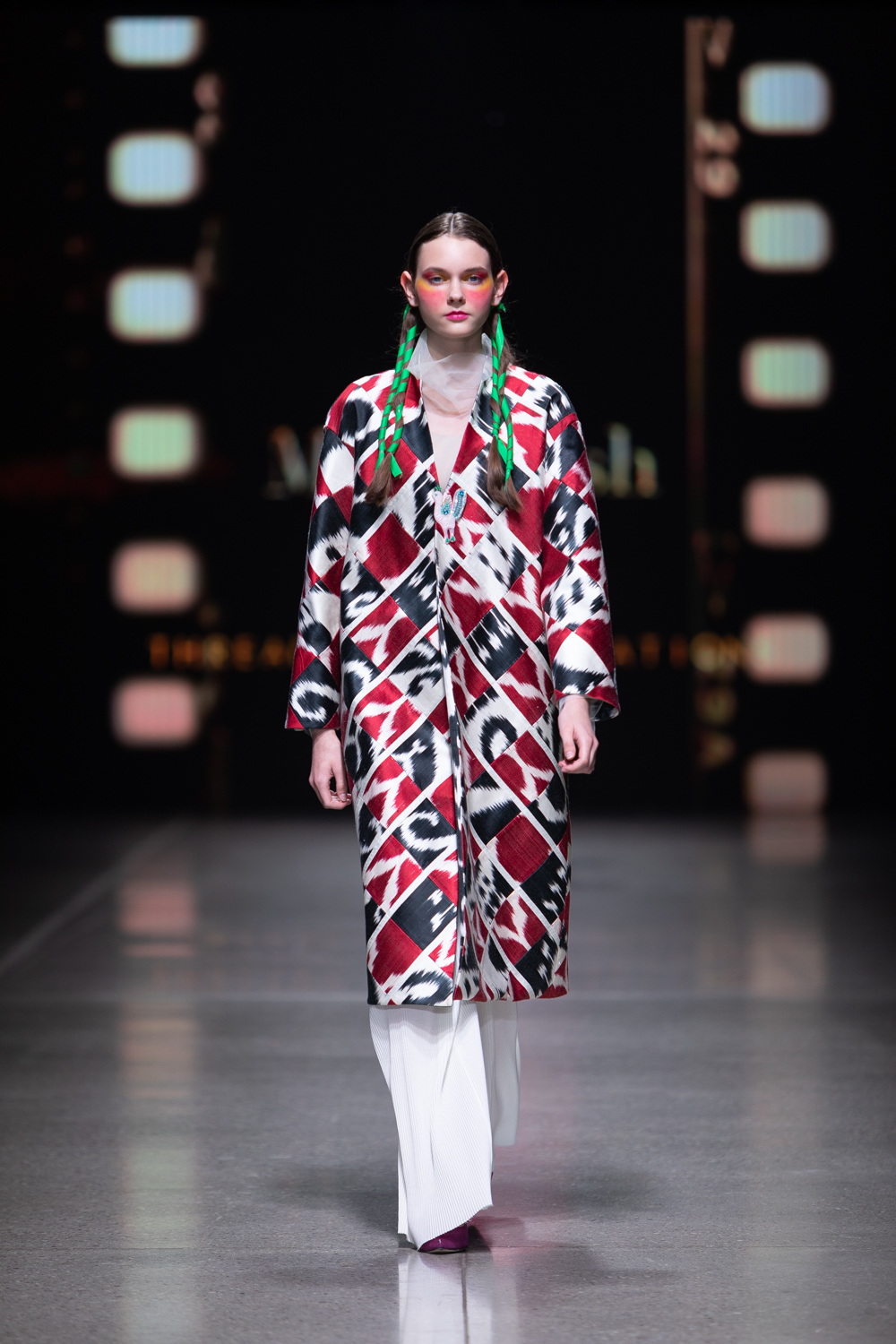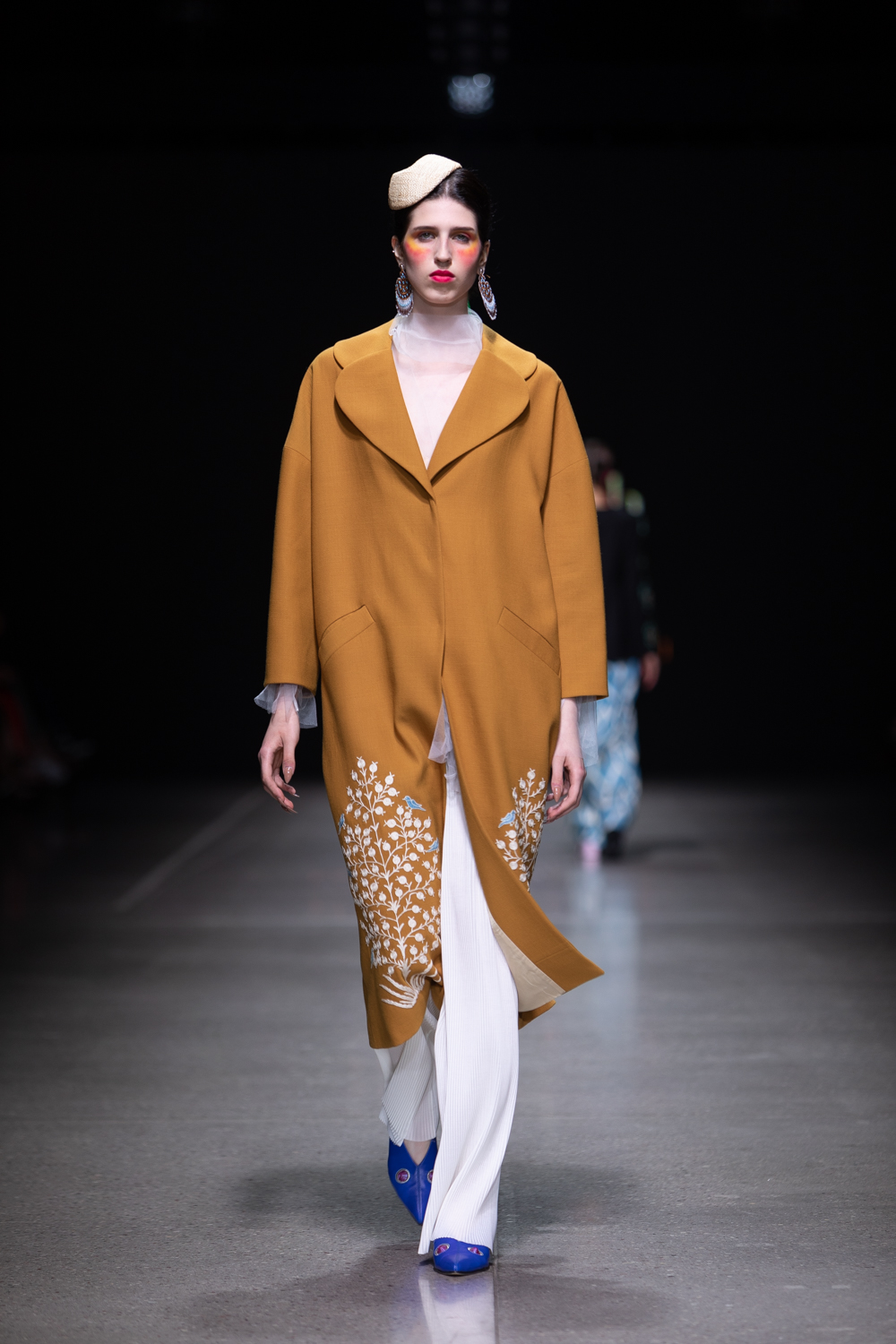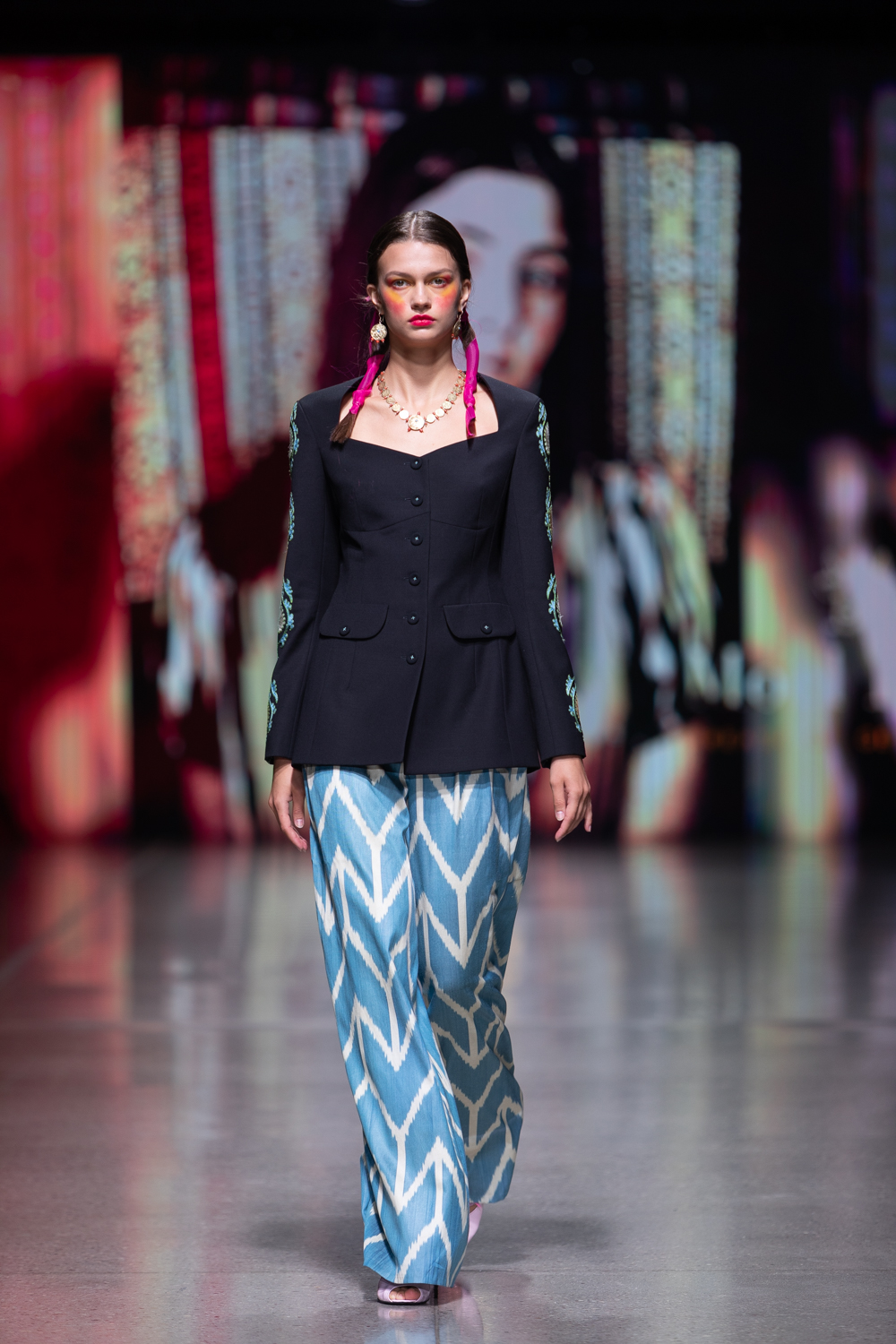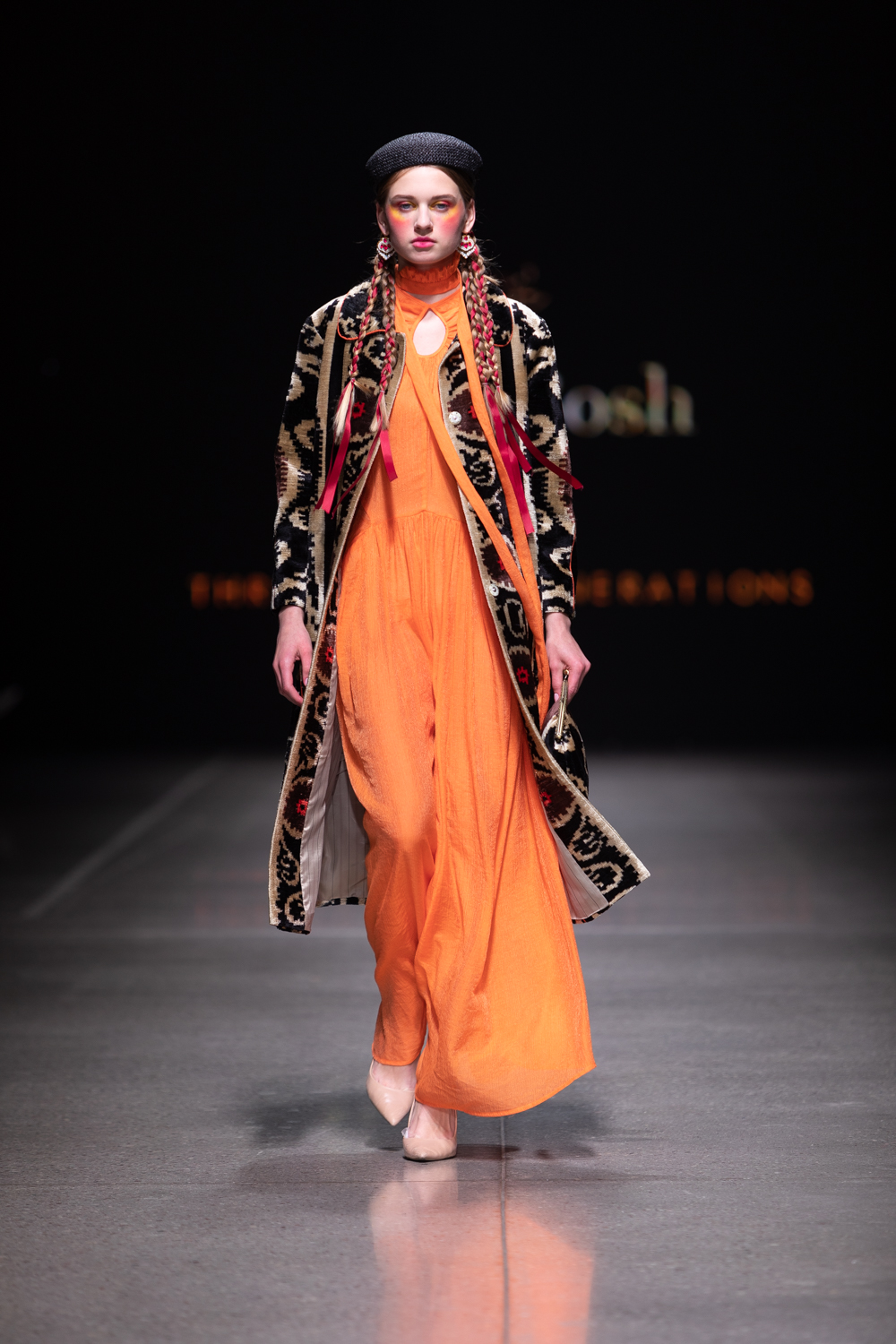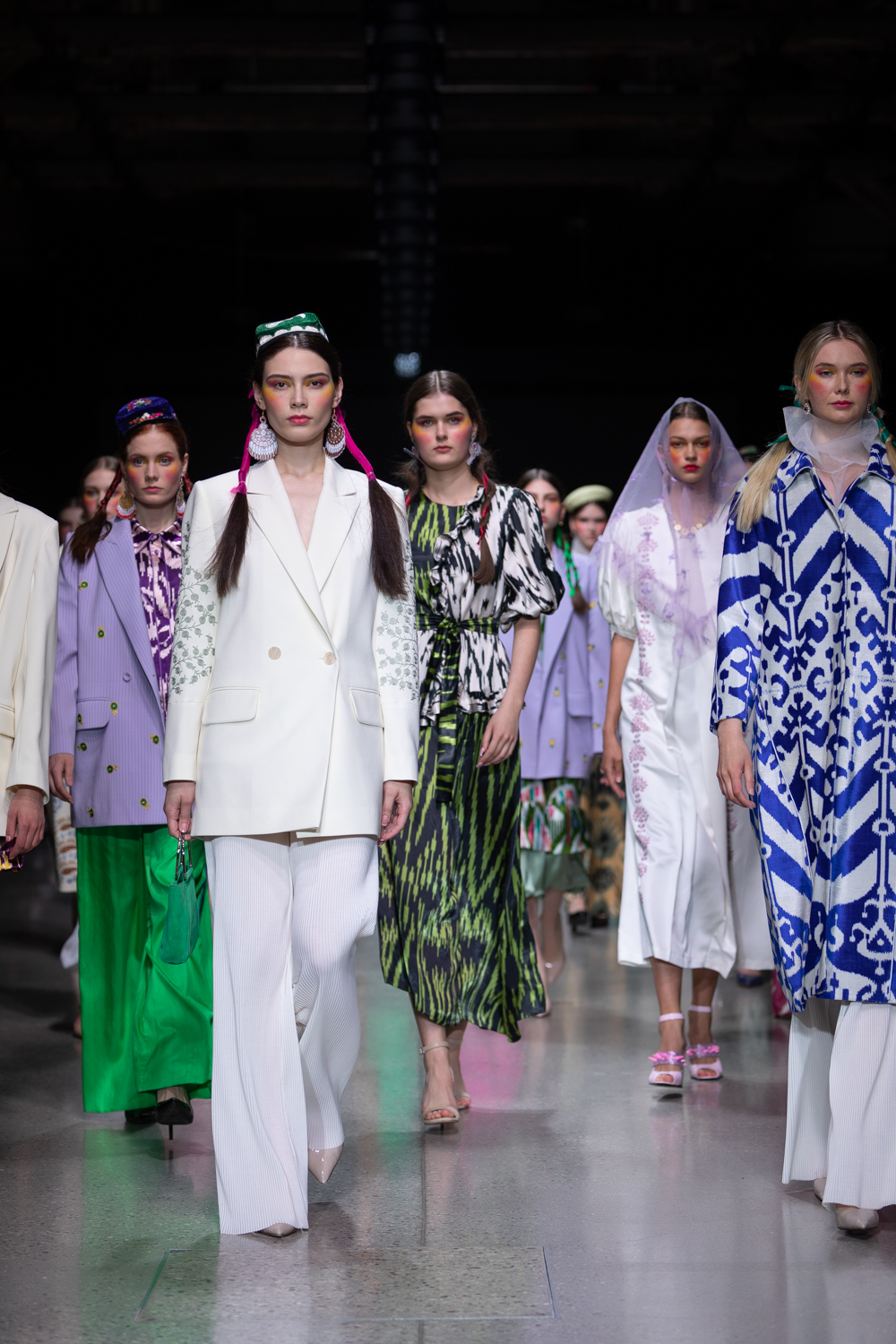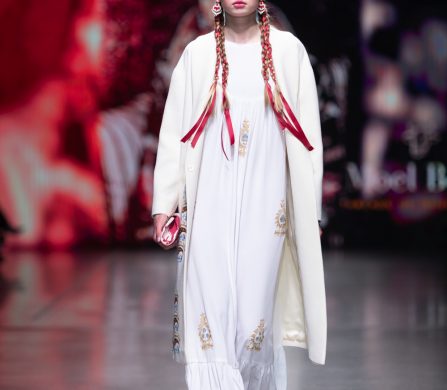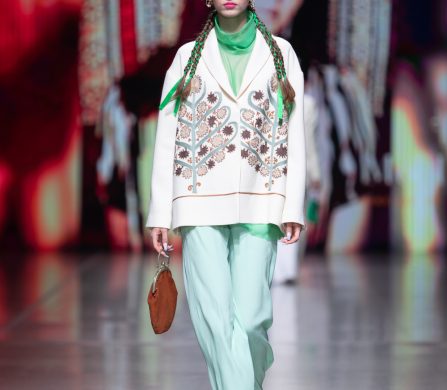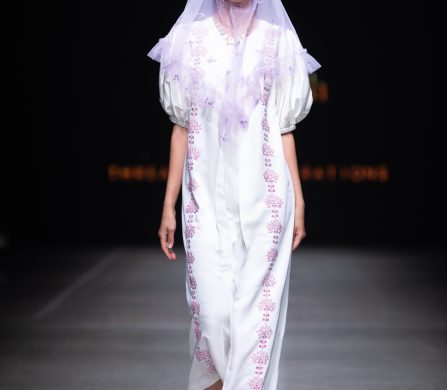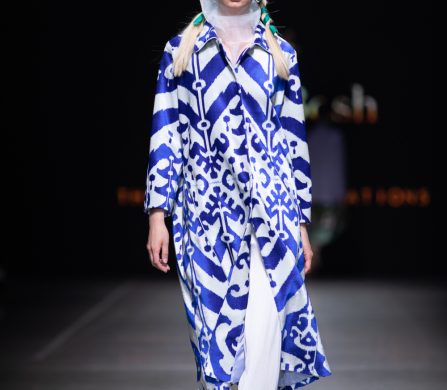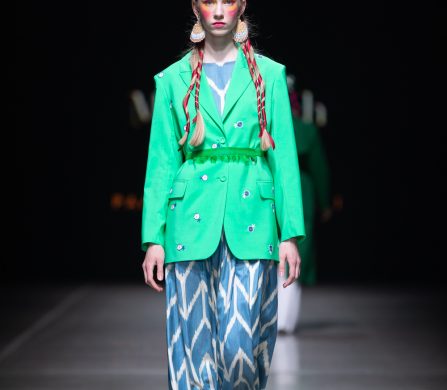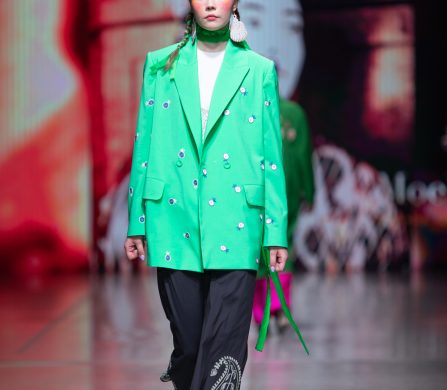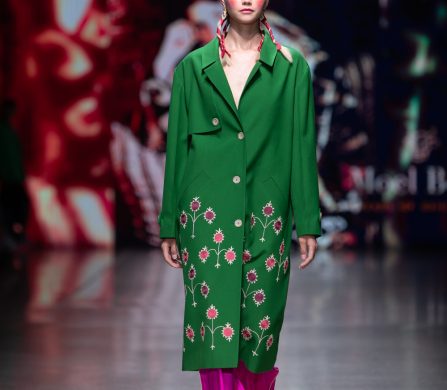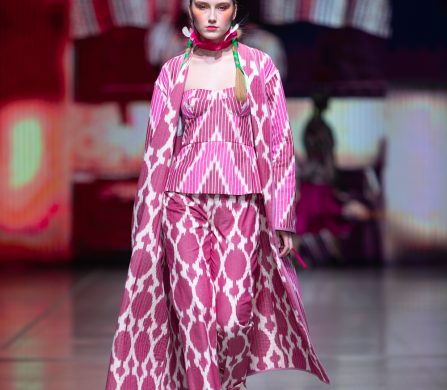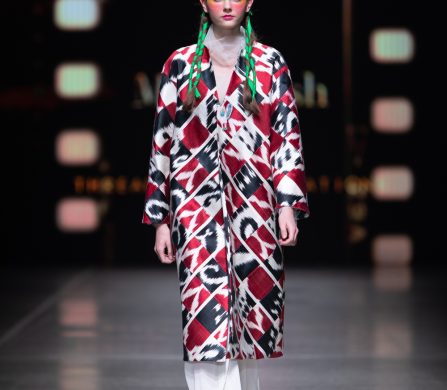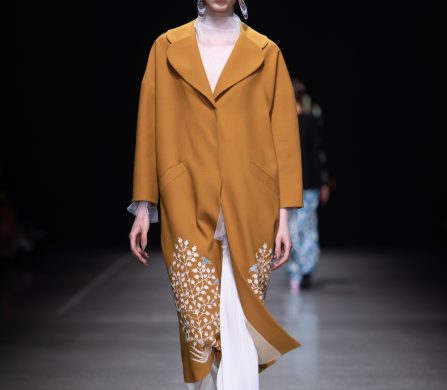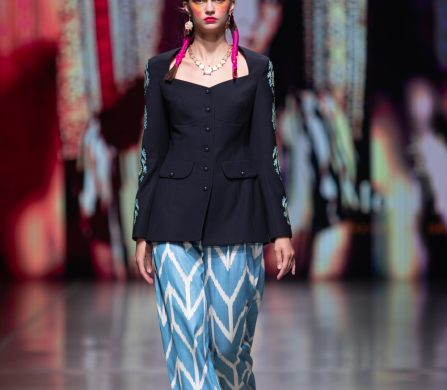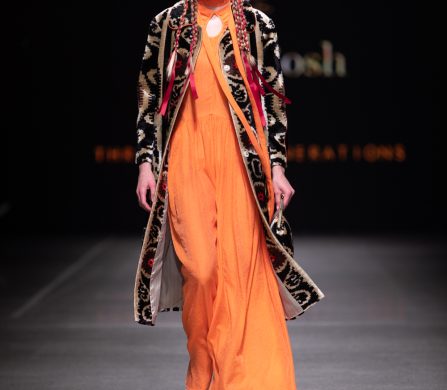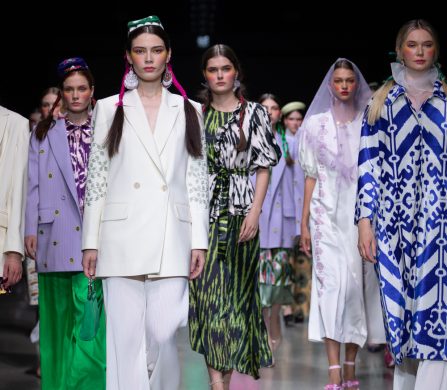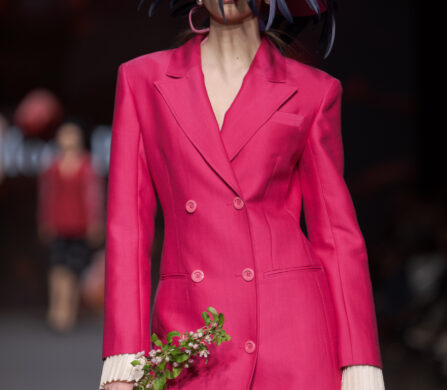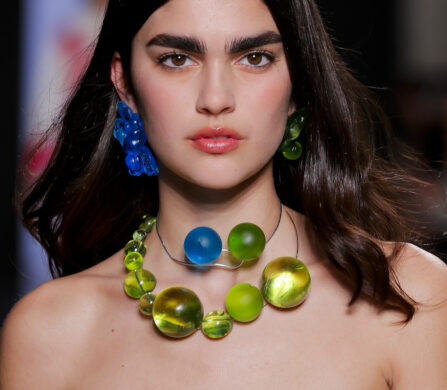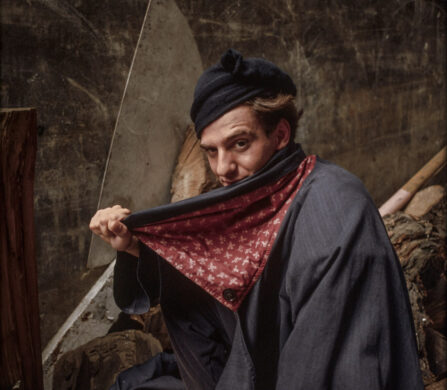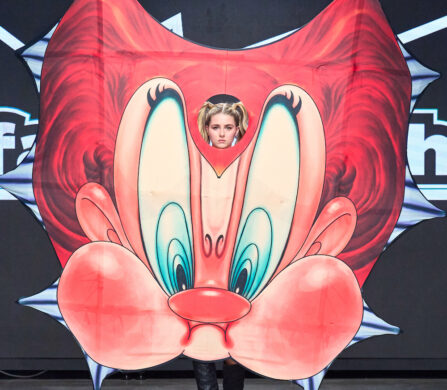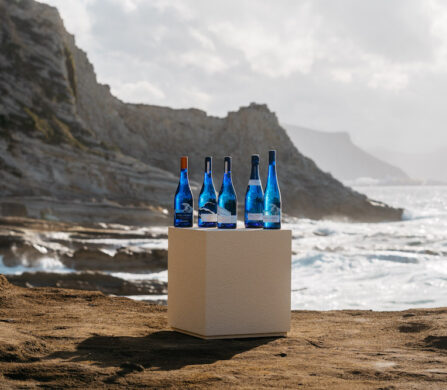Having recently wrapped its 34th season, Riga Fashion Week is no newcomer to the catwalk circuit. However, this was the first time the event, organised by the Baltic Fashion Federation, had opened its doors since the start of the pandemic.
The lifting of COVID-19 restrictions naturally brought with it a sense of optimism. Svetlana Kairova, the designer behind the Selina Keer label, was certainly focusing on more carefree times. With her collection Deep Identity, Kairova marked a return to the original inspirations that formed the distinctly feminine DNA of the brand, namely “the happiness of childhood, dreams, carelessness, the burning sun, classical music, Jacaranda gardens, Paris galleries and the cinema of the 1970s-1990s with lavish costumes from famous designers and much more…”
The jacarandas and sunshine were clearly reflected in the predominantly lilac and yellow colour palette, which was contrasted by looks in jet black, often with beaded embroidery details which – together with Richelieu cutwork lace – is a signature of the brand. Meanwhile the 1970s and 1980s were represented in the silhouettes, which ranged from fluid jumpsuits to more boxy styles with structured shoulders and peplumed pencil skirts.
In dramatic contrast, Volga Vintage presented a darker outlook, influenced by recent world events and imagining “the most devastating scenarios”. The brand, which sells a curated collection of second-hand garments, selected by stylist and blogger Sergey Hatanzeisky, is immensely popular amongst the young influencers of Riga.
Its Atomic collection was presented as a wardrobe for the end of the world. “Everything you love fell apart, vanished and got destroyed,” explains Hatanzeisky. “You have no time to get dressed, pack your valuables, because you need to run as fast as you can. Survival mode is the new normal…” Multiple layers of outerwear, puffer jackets seemingly stuffed with belongings and models clutching handfuls of handbags conveyed the flight from an impending apocalypse.
While most of the designers showing this season were Latvian, Riga Fashion Week often features brands from the Baltic and beyond. Uzbekistani label Moel Bosh was founded a decade ago by designer Zuhra Inat and her three daughters. The garments are handmade using natural fabrics such as cotton and silk, in prints – and particularly ikats – designed by Inat and inspired by her birthplace Samarkand.
The Threads of Generations collection was an ode to the family traditions and applied arts of Uzbekistan, but this was not a take on folk costume. Rather, silk hand embroidery was presented on coats, jackets and dresses in contemporary cuts. The recurring theme in this collection was trees, representing family ties, childhood memories and the birdsong from the courtyards of Samarkand.
With the very recent lifting of COVID-19 in Latvia, Riga Fashion Week was on a smaller scale than past seasons and there were as many digital presentations and fashion film screenings as there were physical fashion shows, with menswear notably absent in the latter. Yet the three very different collections highlighted above demonstrate the diversity of creative talent that can be found here. No doubt they’ll be plenty more to discover in seasons to come.
Learn more about Riga Fashion week here.
words. Huma Humayun












